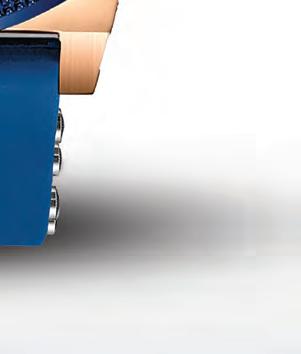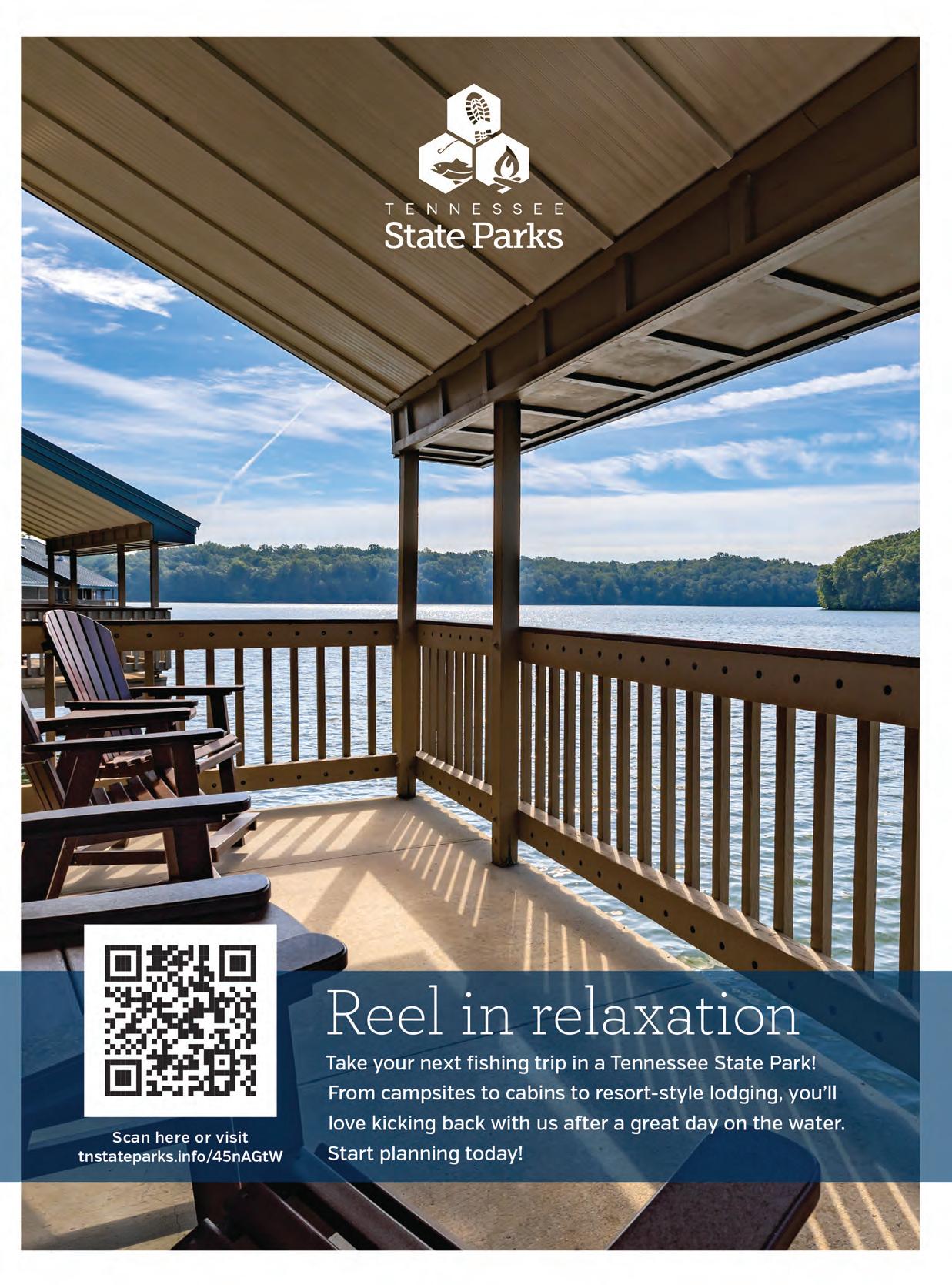

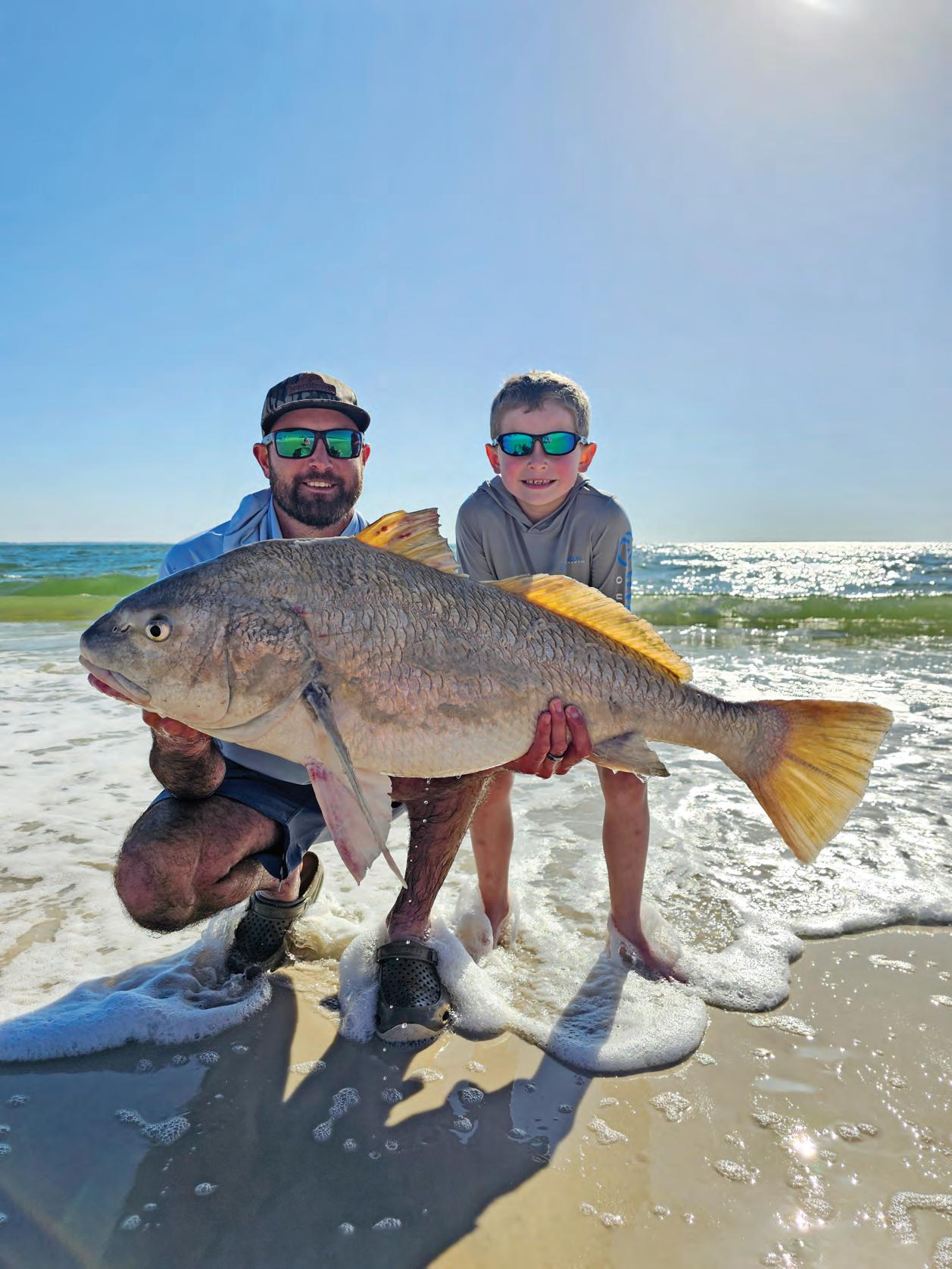
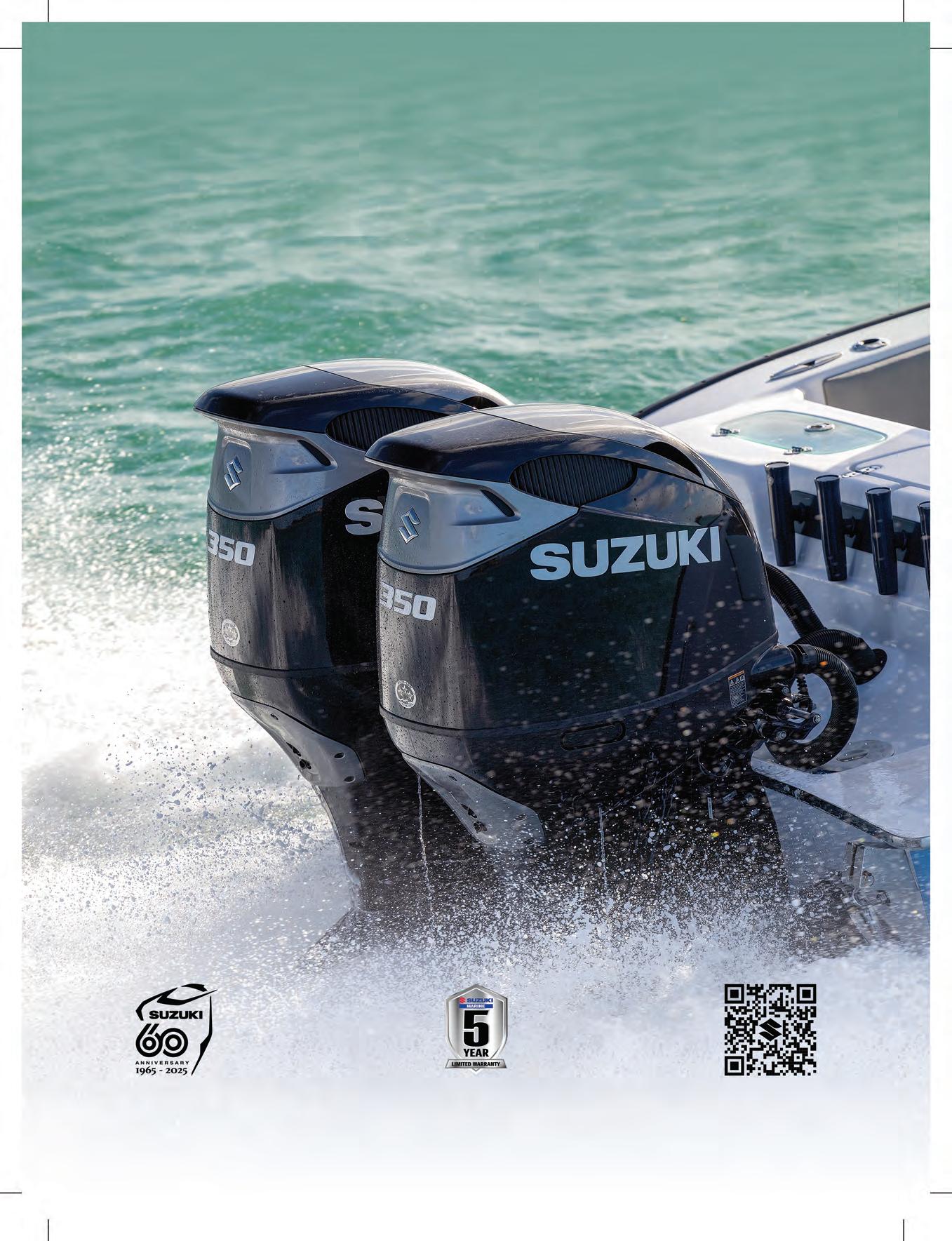

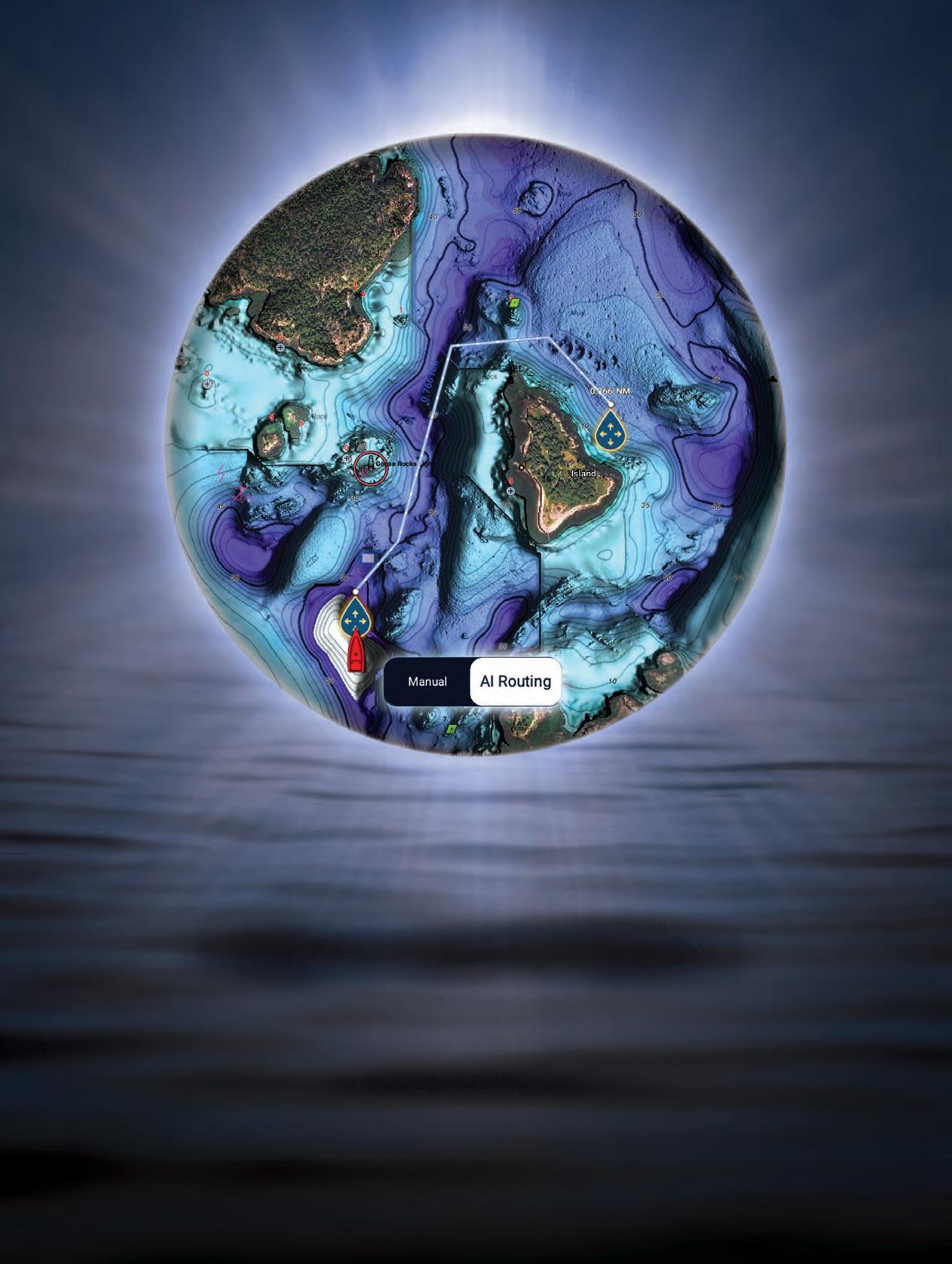
You want AI Routing! Let TZ MAPS with AI Routing make route planning a snap. Don’t take our word for it. Scan here to see for yourself how easy it is!


















You want AI Routing! Let TZ MAPS with AI Routing make route planning a snap. Don’t take our word for it. Scan here to see for yourself how easy it is!











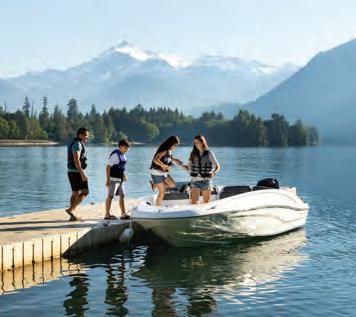






Embarking on the open water is an exhilarating experience, flled with the promise of adventure and relaxation. Whether you’re a seasoned sailor or a weekend cruiser, protecting your vessel with proper insurance is not just a choice—it’s a necessity. Explore the reasons why every boat owner should prioritize boat insurance for a worry-free voyage.
The open water can be unpredictable, with unexpected storms, collisions, or other potential accidents. Boat insurance can give you fnancial protection if there is damage to your vessel, providing coverage for repairs or replacement.
Accidents on the water can result in damage to other boats, docks, or even injuries to passengers. Boat insurance offers liability coverage, which can pay for damages or injuries you’re liable for while boating, up to specifed limits, and lawsuit costs if you’re sued. This includes damage you cause to another watercraft or if someone on or near your boat is injured and you’re found to be legally responsible.
Unfortunately, boat theft and vandalism are realities that boat owners face. Boat insurance has comprehensive and collision coverage that can protect you against events outside of your control, including theft and vandalism.
Accidents on the water may lead to injuries for you or your passengers. Boat insurance offers a range of optional medical payments coverage limits, helping to cover medical expenses if you are in an accident or someone is hurt on your boat, regardless of fault.
If you fnanced the purchase of your boat, most lenders require insurance coverage to protect their investment. Having boat insurance not only fulflls these requirements but also gives you peace of mind knowing that your fnancial interests are safeguarded.


Some water municipalities and marinas may require proof of insurance for docking or accessing certain areas. Boat insurance allows you the fexibility to explore different destinations without worrying about entry restrictions.
Emergency towing and assistance
Progressive boat insurance can include optional Sign & Glide® On-Water Towing coverage. If your boat is disabled or breaks down on the water, Sign & Glide® pays for on-water towing, jump starts, soft un-groundings, and fuel delivery.
Wreckage removal
If your boat sinks, Progressive boat insurance will cover the cost of removing your boat from the water (if removal is legally required).
Investing in boat insurance is not just about protecting a valuable asset; it’s about safeguarding the memories, experiences, and joy that come with your on-water adventures. Don’t let unforeseen circumstances disrupt your journey—navigate with confdence, knowing that Progressive boat insurance has you covered. Ensure a smooth and worry-free voyage, because when it comes to your boat, peace of mind is the ultimate luxury.
Scan to get a quote in as little as 4 minutes
learn more.




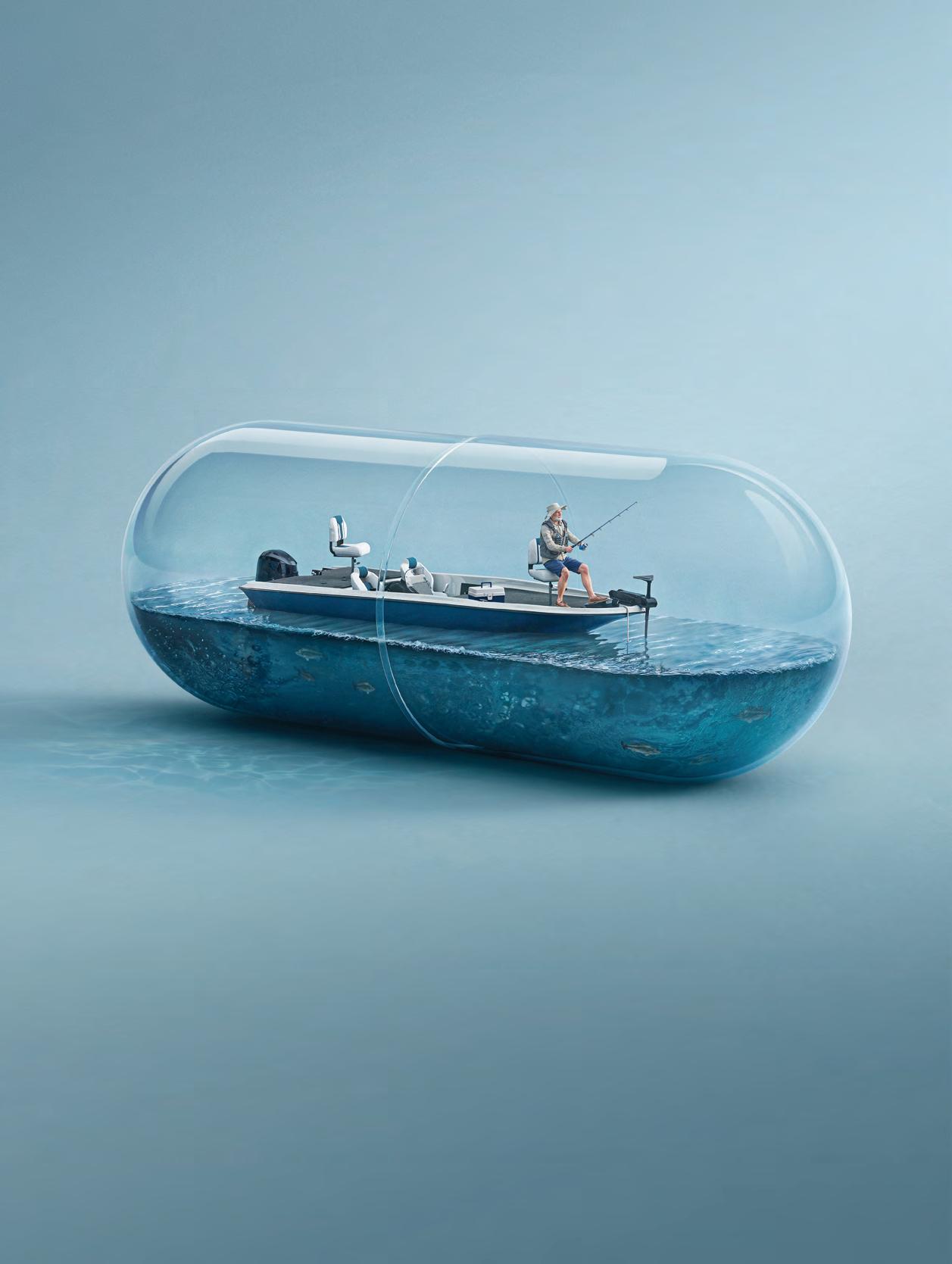
















Tim Barefoot
Since the endangered, gag grouper and American red snapper are o!-limits this month, it would be a good time to go deeper and/or change up your tactics to target di!erent species. For example, go ahead and catch your three scamp/red grouper combo, then switch over to smaller baits and smaller circle hooks on chicken rigs to target beeliners, trigger sh grunts and seabass.
I would strongly suggest taking live pin sh from the marina for scamps and red grouper. is will accomplish two things. One, it will weed out a bunch of trash bites from smaller snappers and other bait steelers because only the sh with a mouth large enough to eat the pin sh will give it a go, and two, it will catch the older (larger) sh that o en will not bite a chicken rig and cut bait. e chicken rig with a bank sinker, and the bank sinker with a triple swivel, leader and hook have been the industry standard for many decades, but these sh have evolved and have become savvy to this method, in my humble opinion. is is the reason the Decoy Jig system is so e!ective. ey’ve never seen anything like it and it’s a clever disguise of what is really happening; the weight and bait are in one clean package, attached by a piece of %uorocarbon.

ere is one downfall to shing live pin sh on the Decoy Jig—it will de nitely get the shark bite. Sharks, like many other sh, are hardwired to eat this struggling bait attached to something else they like to eat, like a squid or a crab.

ere’s another sh I didn’t mention earlier, but this is a good time of year to target hog sh. ere are many schools of thought when it comes to catching them. Many say the chicken rig is the ultimate and, yes, there have been a lot of hog sh caught on your standard chicken rig. But this is a pretty wily species, and hard to catch for a number of reasons. Not only are they hard
to get to bite, but they pull HARD! You have to have seriously strong connections because they will test every part of your tackle. ere’s one more sh that is almost as good table fare and that’s the white jolt head porgy. Same tactics, same everything; you just gotta nd them. ey are beyond delicious. You can troll all you want, but I’ll spend my time bottom shing for the best groceries and keep the light line out back for any wahoo, dolphin, kings or tuna that may cruise by. It pays dividends to jig up live cigar minnows and live sardines on the Sabiki or just purchase them for the light line. August and September are the months that wahoo, yellow n, dolphin, sail sh— you name it—are everywhere inshore following big schools of bait, and a live cig or sardine will de nitely get the bite. I would de nitely keep a live pitch bait ready on a circle hook on piece of %uorocarbon for the sail sh that’ll swim by the boat. Keep the thumping music, cooler slamming loud everything to a minimum if you want to have a shot at getting some of these sh to swim up to the boat. Fact: You’ll see more sh near the boat when you’re quiet, otherwise they will keep their distance and you probably won’t see them, and they’ll have their guard up if they do get near the boat.
Go on, get down to the bottom or at least lower in the water column for the best groceries and keep a pretty live bait out back on the lite line for a great day of catching...not shing.
Check out more from Tim Barefoot at barefootcatsandtackle.com.

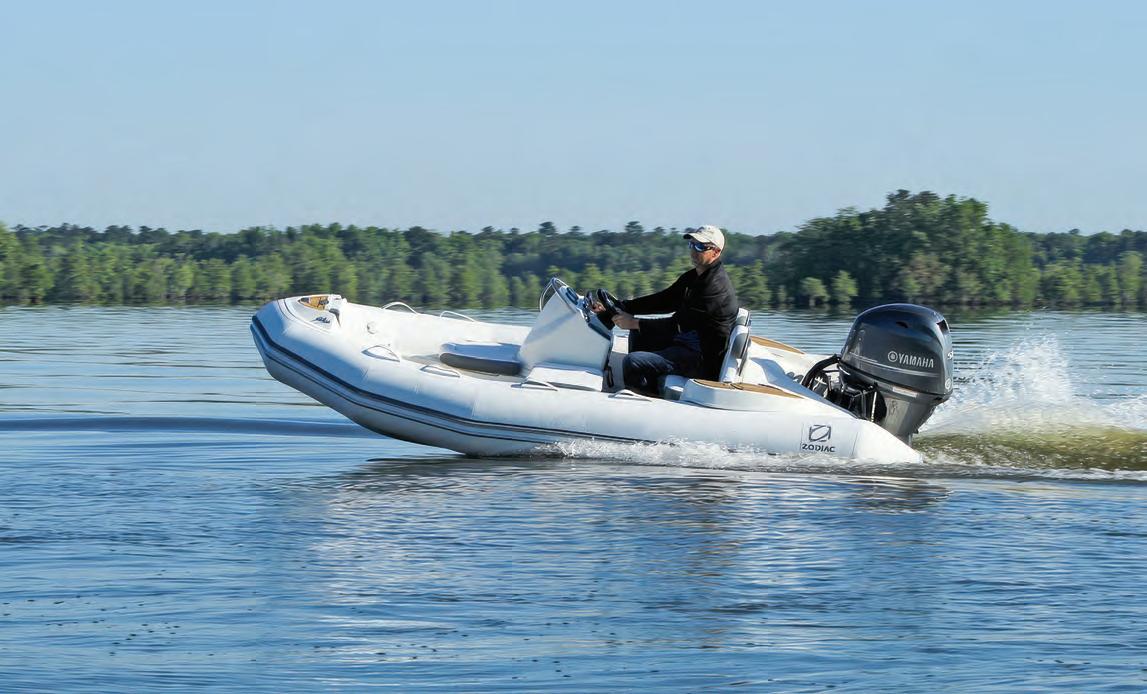
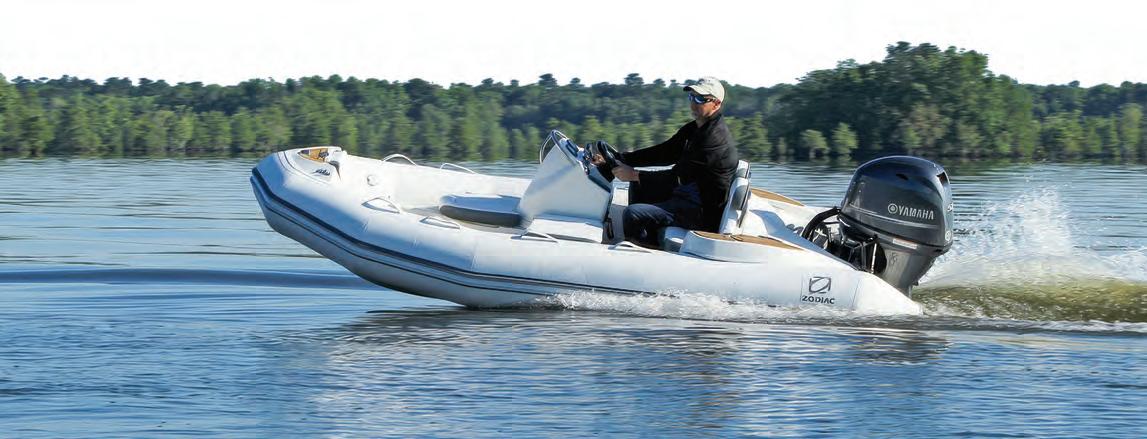


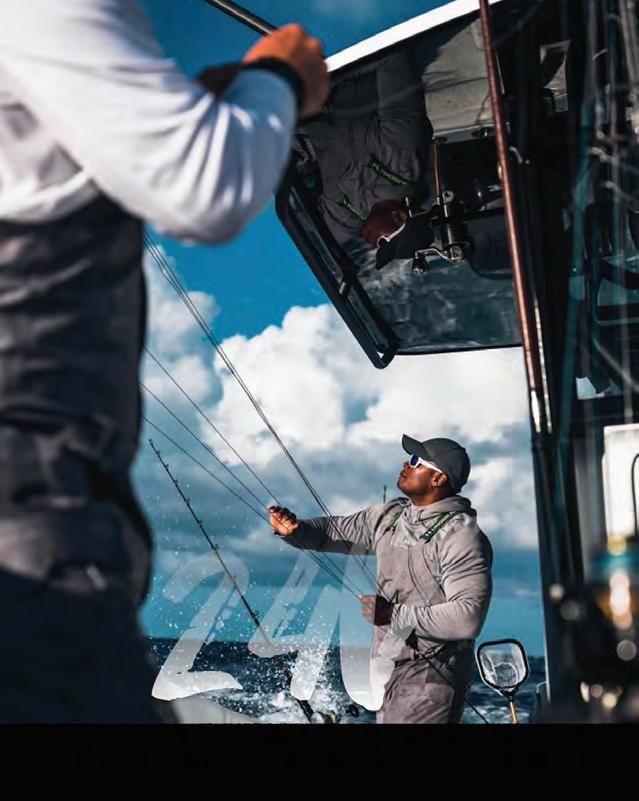









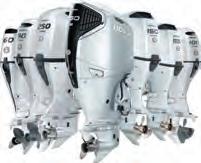
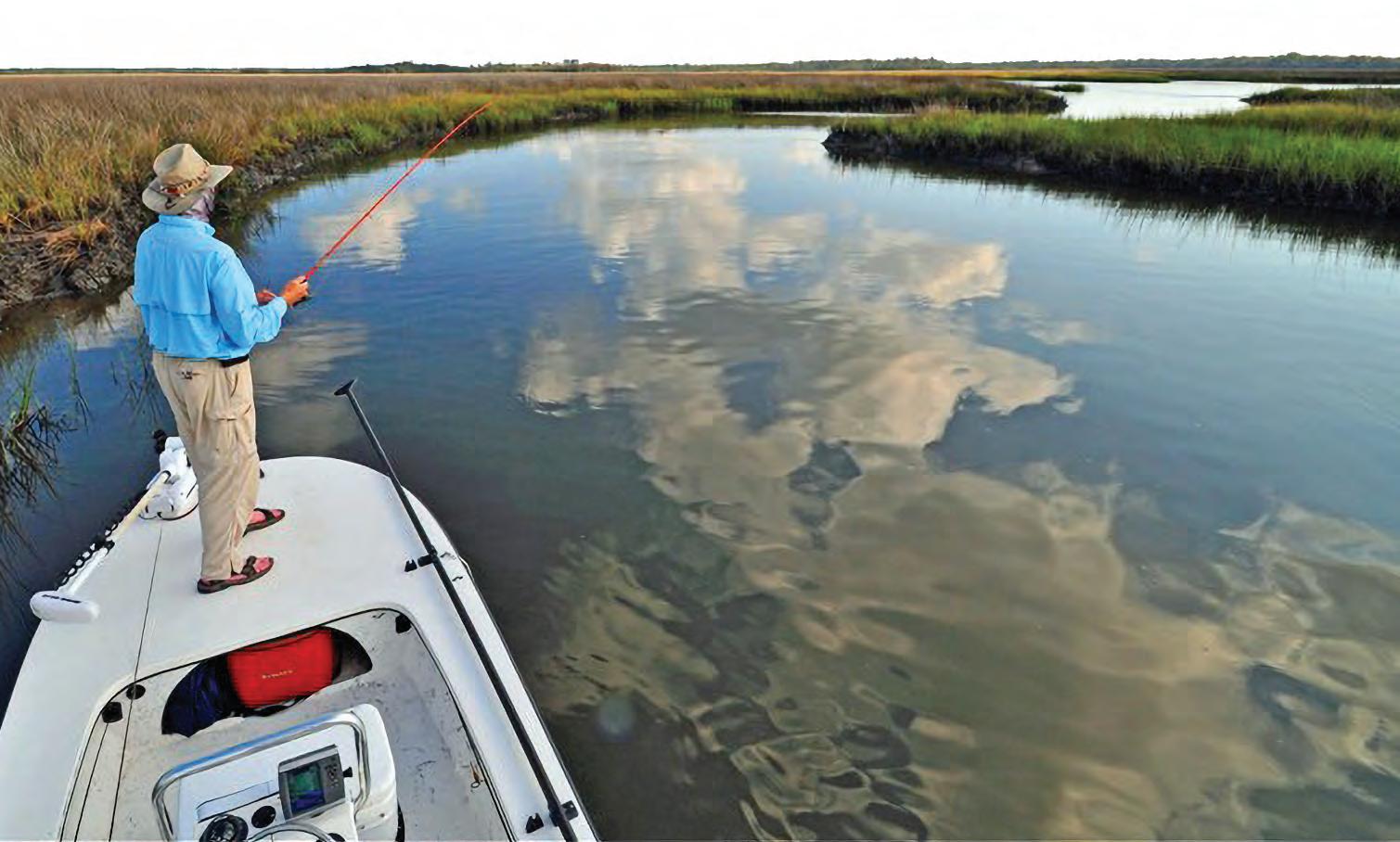
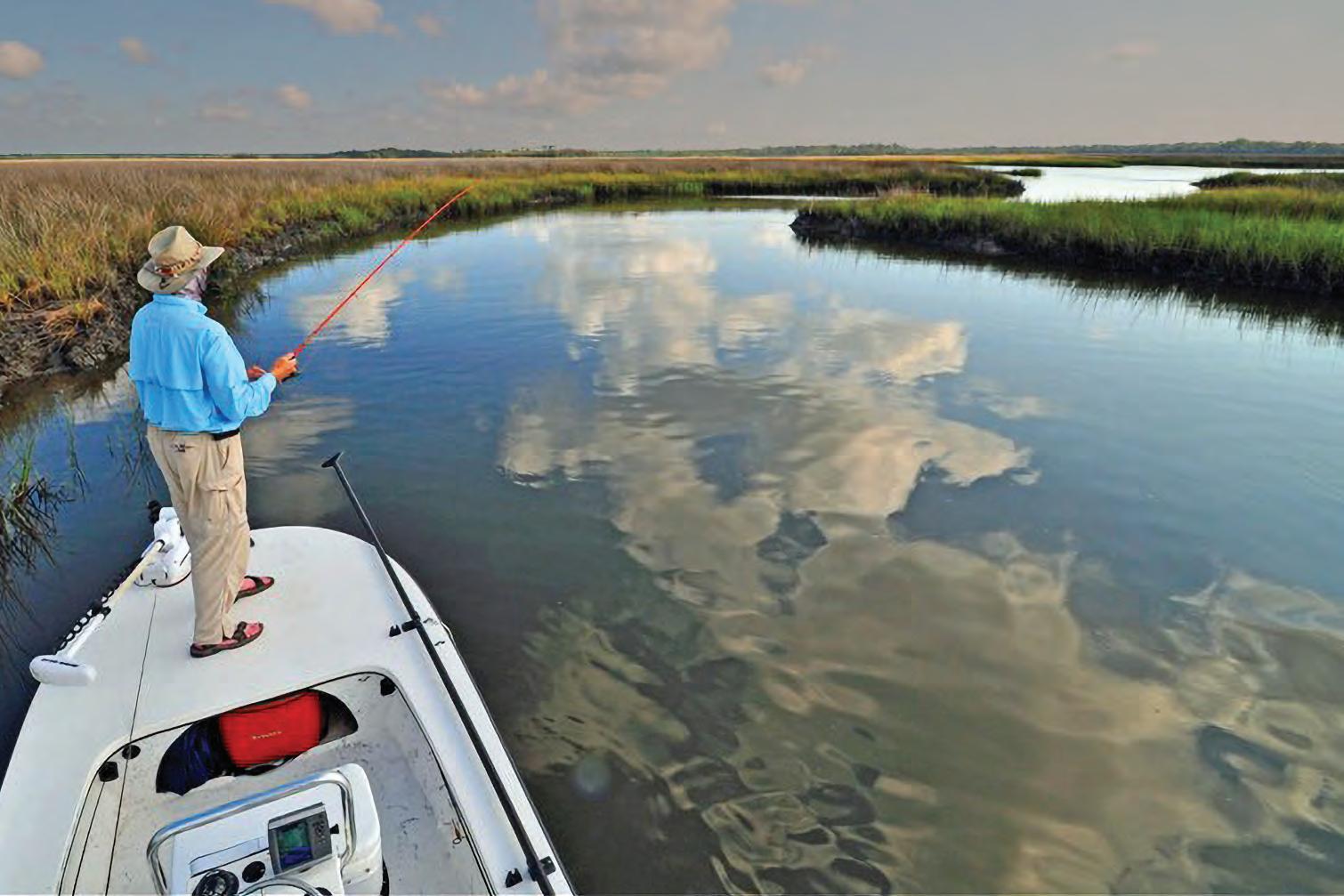
By Joe Woody
Somewhere in McDowell County, North Carolina, where the Blue Ridge Mountains lean in close and the rivers run clear enough to drink, there’s a place where sh outnumber people, and cell service is more suggestion than fact. It’s a land of steep gorges, sparkling lakes, and waters that curl through the woods like they have secrets to keep. Welcome to the triple-threat shing grounds of Lake James, the Linville Gorge, and the Catawba River — tucked into a county that doesn’t make much noise but delivers in trout, bass, and backcountry beauty.
If you’ve never heard of McDowell County, don’t worry — that just means the sh haven’t heard of you either, and your odds are still good. Whether you’re a dry-%y purist with a hip pack and a “River Runs rough It” complex or someone who likes to toss worms near pretty rocks, this corner of the Carolinas has a spot for you. Bass are stout and sassy. Trout are plentiful, and they have attitudes to match. So gas up the truck, tie on something that worked last season, and head for the hills. e shing is great, the views are even better, and McDowell County is ready to welcome you — even if the trout aren’t.
Lake James is the area’s big-water bu!et. is 6,800-acre reservoir between Burke and McDowell counties o!ers smallmouth and largemouth bass, walleye, crappie, bluegill, hybrid striped bass, and cat sh. Spring and early summer bring aggressive smallmouth to the surface from April to June. Tossing a Pop R or a Zara Spook at dawn can trigger explosive strikes. Crappie move shallow in May and June, while cat sh linger year-round, especially from fall through early spring. Bass shing is best around rocky points and submerged trees with crankbaits or so plastics. Walleye respond to trolling or jigging near the dam. If you’re a er cat sh, bring cut bait and patience. Lake James State Park has public ramps, campgrounds, showers, and picnic shelters — perfect for anglers who like their wild with a touch of comfort.
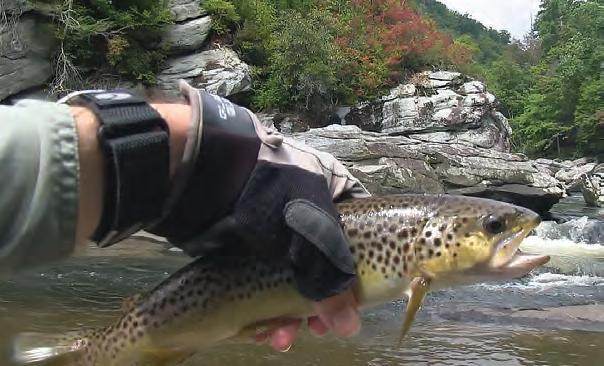
If Lake James is your comfy recliner, Linville Gorge is the rugged Adirondack chair that bites back. Known as the Grand Canyon of the East, this steep gorge is home to the Linville River, one of North Carolina’s best wild trout waters. e upper river holds wild and stocked rainbow, brook, and brown trout. Below Linville Falls, you’ll nd a backcountry adventure with native browns lurking in clear pools. Reaching prime spots requires steep descents, with some trails dropping 1,400 feet. e solitude and scenery reward every blister. Bring light tackle, stealthy casts, and plenty of water. Spring hatches bring trout to the surface, and a well-placed dry %y can tempt a wary sh. Remember your headlamp — climbing out in the dark is no fun.
Below Lake James, the Catawba River %ows cool and clear, sheltering rainbow and brown trout that grow large and wary. Float trips are ideal. An eight-mile dri from Bridgewater Dam to Morganton delivers ri sh. e Joseph McDowell Greenway o!ers piers, canoe launches, and bank access perfect for beginners or families. Streamers and weighted nymphs excel in the tailwaters, while warmer sections downstream attract bass and pan sh.
Wherever you cast, the sh here don’t come easy — but they come honest. And in this corner of the Blue Ridge, that’s the best kind of bite.






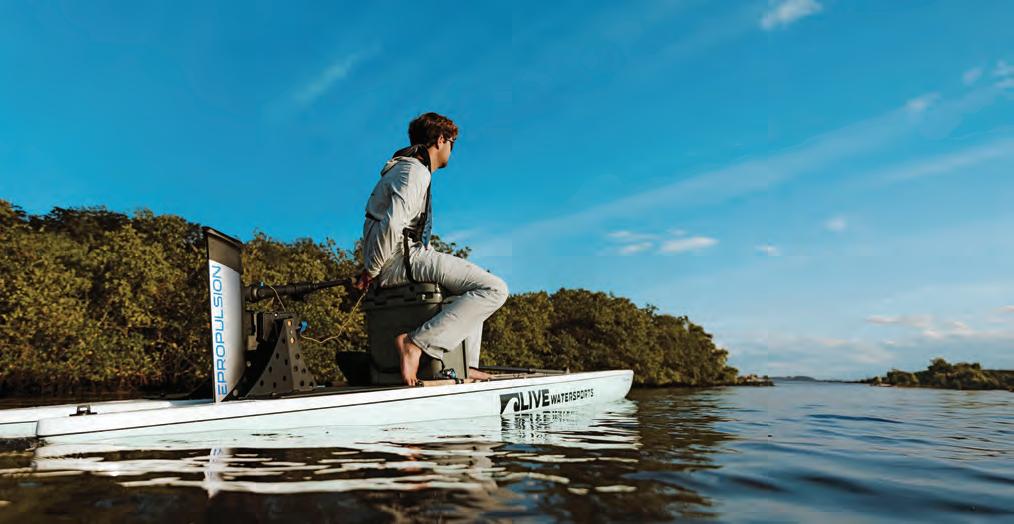












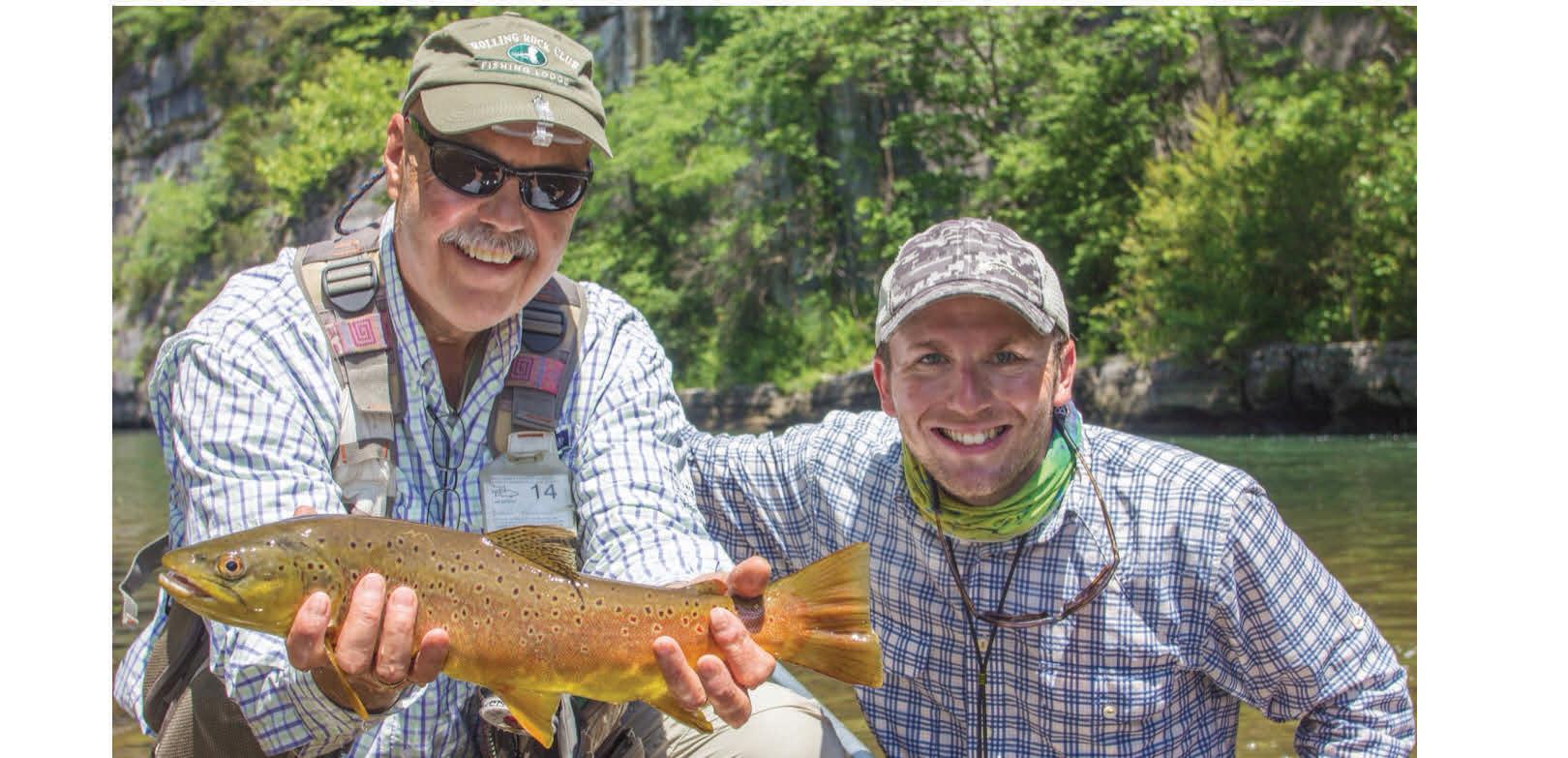




Capt. Mike Smith

Black drums, aka “Big Uglies,” are a super fun sh to catch. It doesn’t matter if they are 18 inches weighing two pounds or 5 footers weighing 90 pounds. ey put up one heck of a dragpulling ght once they gure out that they’re hooked.
Black drum can be found in inlets, saltwater estuaries, bays, river mouths, brackish creeks and especially anywhere in close proximity to oyster beds as they love to eat oysters, clams, crabs, shrimp and bait sh. ey are o en in huge schools and will stay in one spot for a week or so if there is a lot of food for them and not a lot of predators, which means that you can catch dozens of them when the bite is on.
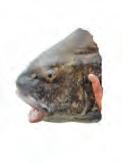
My favorite way to target “big uglies” is on the incoming tide, in shallow estuaries, less than 3 feet deep. at is when you can see them tailing as they root around oyster clumps for crabs and shrimp. A well-placed shrimp or crab o!ering will get their attention very quickly. Make sure you have enough weight to get it to the bottom so they can nd it.
on them. De nitely sh the older docks with the most stu! growing on them. ese docks pilings will attract the most crabs and shrimp to them. Old dock pilings are like grocery stores for black drum. When I sh the docks for black drum I usually have one of two baits with me. Live or frozen shrimp or a scented shrimp jig. ose are my goto baits for drum around the docks. Real shrimp works the best, but the scented jigs are pretty good too. A shrimp rigged with a small split shot is how I usually target black drum. Just cast it to where you think the sh are and wait for the hit. If you are shing with a scented shrimp jig just bounce it slowly on the bottom as you reel it in. It is similar to the way that you would sh for a %ounder. e slower the better.
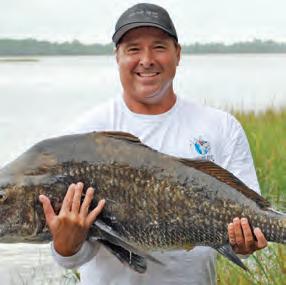
Black drums have four nostrils, and their sense of smell is amazing, so the stinkier the bait, the better when targeting these sh. A great arti cial bait is the Berkely Gulp shrimp on a 1/8 ounce jig head. You can just cast it to the sh and let it sit on the bottom and wait for them to nd it. However, if you give it a bounce or two you will usually get their attention much more quickly.
Another great place to target “big uglies” is around docks. Dock pilings tend to have lots of oysters, clams, barnacles and sponges growing
For surf shing anglers, large schools of black drum typically work their way up and down the beaches in the cooler months feeding on crustaceans. Use a beefed up pompano rig, jig or sh nder rig and place them in front of the schools approaching. Long casts are o en needed, so be sure to have plenty of line capacity on your surf shing reels when targeting the large ones. Not to mention, once you hook into a big drum the drag is going to go screaming! You’ll want anywhere from 20-50 lb. main line for your best opportunity to land one.


Black drum make for a tasty dinnertime treat, but I wouldn’t suggest eating the big ones. ey are always full of worms. I nd that the best ones for eating are 28 inches or less in length.
I caught the black drum in the picture above on a dead shrimp. It was about a 50 pounder and took 30 minutes to get it in. I saw it tailing next to an oyster bar.
Capt. Mike Smith, owner of Fish Your Ass O Charters, is an inshore shing guide who has been shing the inshore waters, oyster bars and grass ats of Florida for more than 40 years. Reach him at (561) 339-2317, email: contact@ shyourasso .com or visit shyourasso .com.
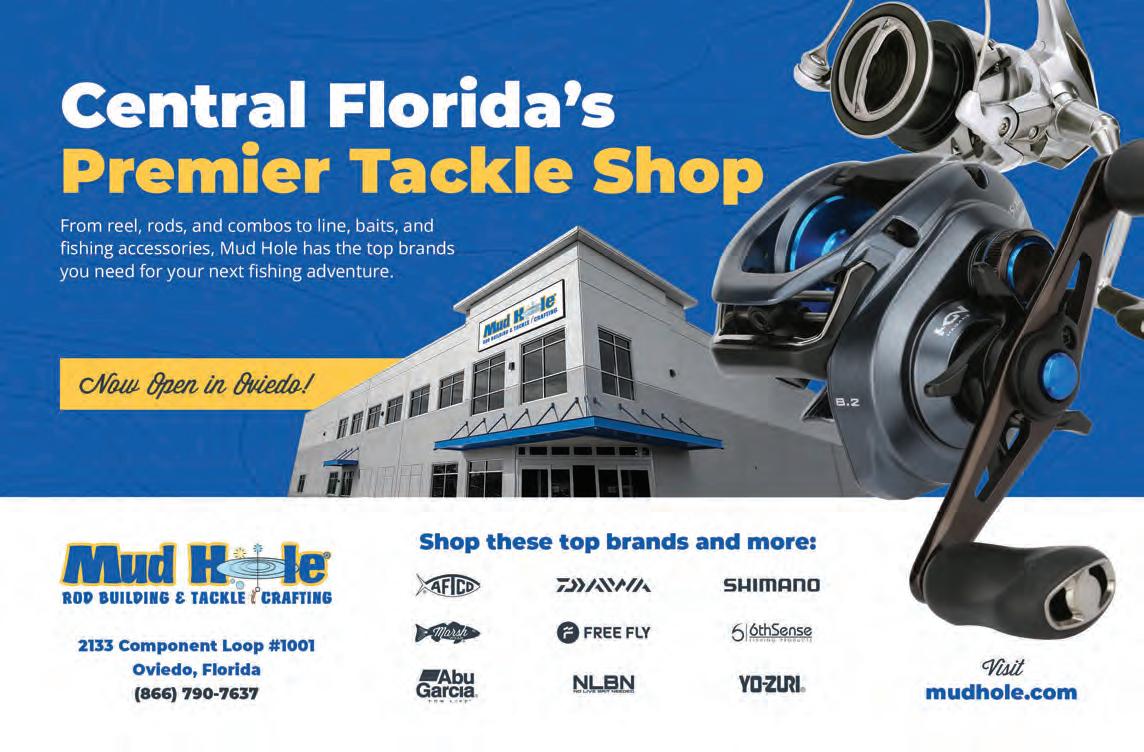

By A. deGruchy
Late spring into early summer is prime time for permit in Islamorada. !ese sh are picky, powerful, and love crabs, so having the right gear and approach can make all the di erence in getting one to the boat.
A 7’ to 7’6” medium-heavy spinning rod with a fast action provides the backbone needed to handle their long runs and sudden bursts of speed. Pair that with a high-quality reel in the 4000–5000 size range, spooled with 20–30 lb braid for better sensitivity and hook-setting power. Personally, my go-to is the Fenwick Inshore Elite rod paired with a 4500 PENN Authority reel. Since permit are known for being line-shy, uoro leaders are a must. 20 lb leader is ideal along with a 2/0 circle hook to increase the chances of a solid hookup. We rely on the Mustad Demon inline circle hooks and they’ve never let us down.
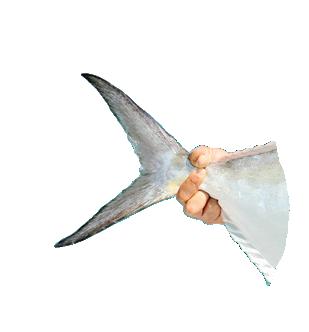
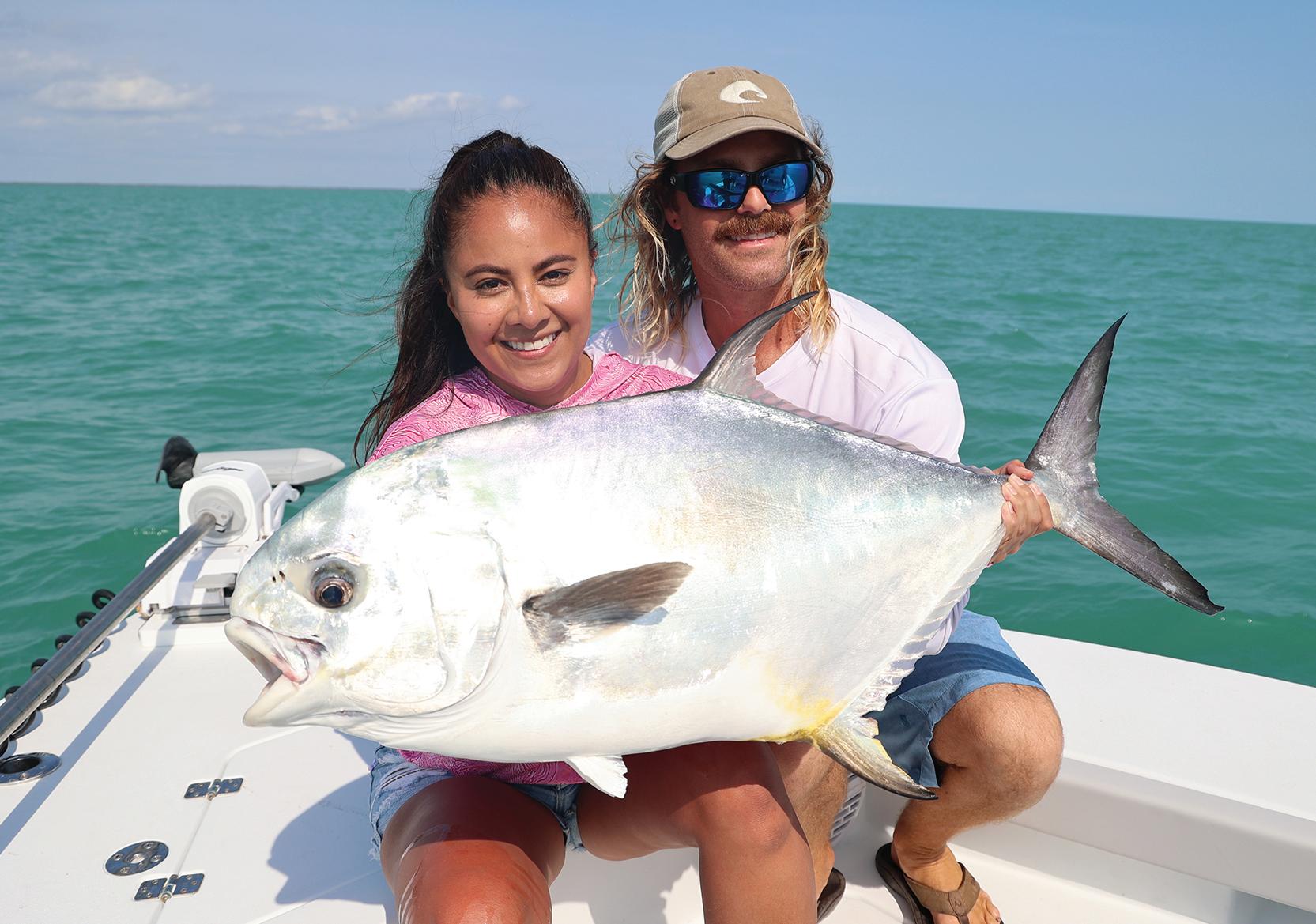
Finding permit in Islamorada means knowing where and when to look. Flats and channels are
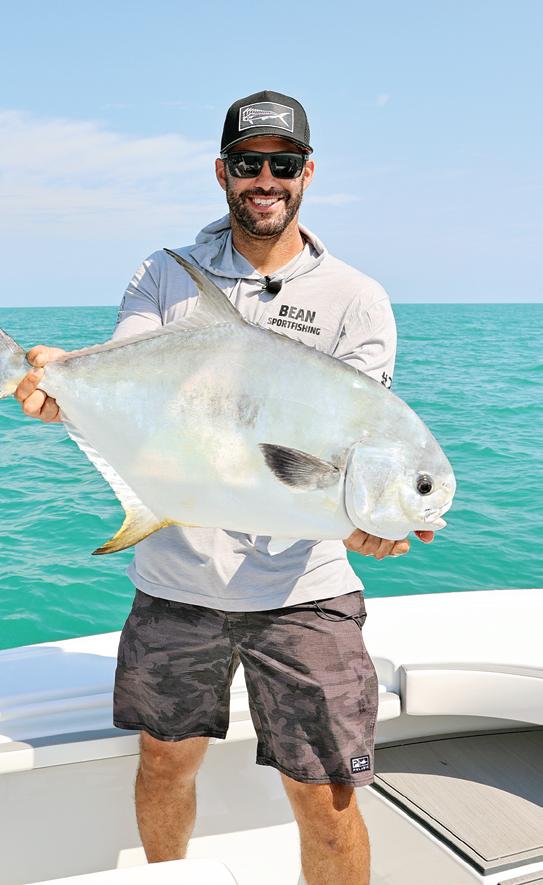
the best spots, as well as some public wrecks. Watch for sh tailing in shallow water or cruising deeper cuts, or schools of permit circling wrecks. A moving tide, whether incoming or outgoing, stirs up crabs and gets permit feeding. When presenting bait, it’s important to cast ahead of where the Permit are heading, let the crab sink naturally, and maintain light tension.
Patience and stealth go a long way when targeting these sh. If a permit is spotted, it’s best not to rush. A smooth cast, a natural bait presentation, and a little patience can make all the di erence. Once hooked, steady pressure and a good drag system will help handle their powerful runs. May and June in Islamorada o er some of the best permit shing of the year. If you’re ready to chase permit in Islamorada, book your trip now at www. beansport shing.com, spots are limited!
Be sure to follow deGruchy’s adventures at @bean_sport shing on Instagram and YouTube.



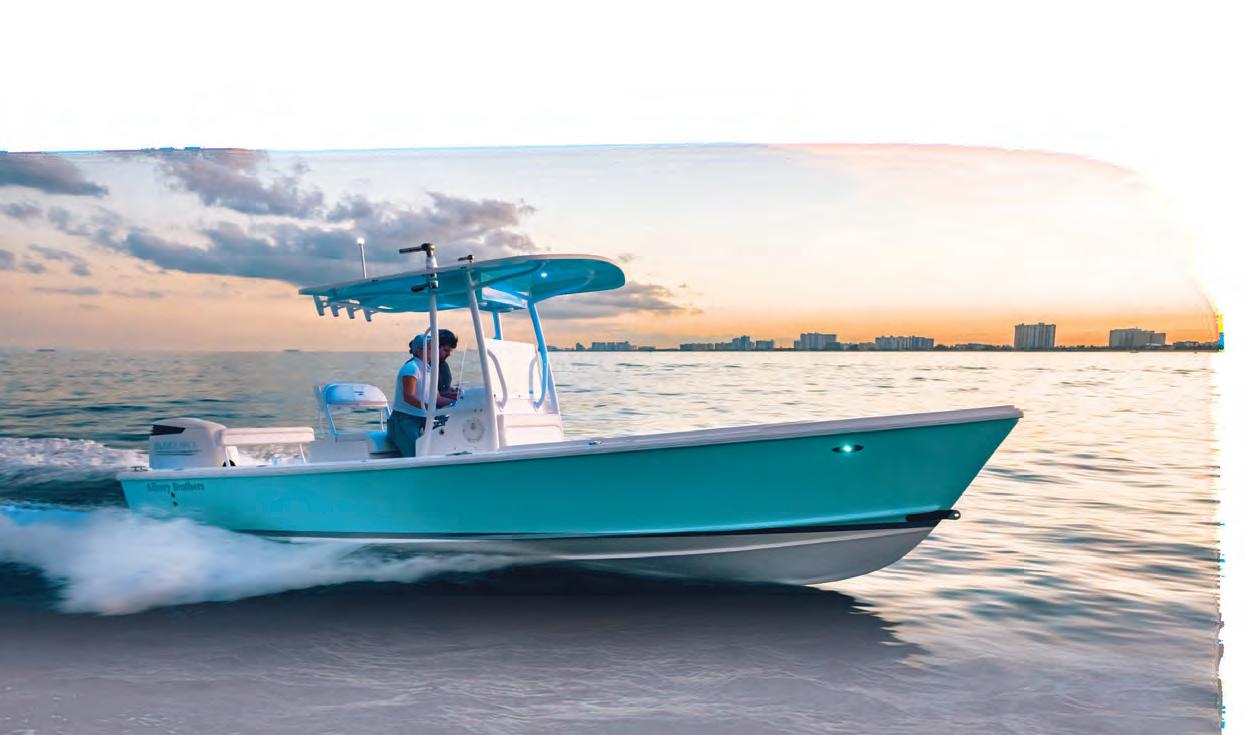

Stationed strategically around the East Coast, all Suzuki RePower Centers have achieved the highest level of Suzuki certifcations to meet and exceed your repower needs. Mastry Engine Center has received the Suzuki Marine Super Service Award and has been ranked #1 in Suzuki Marine US Sales! 60 YEARS OF REPOWER EXPERIENCE!

RePower Packages designed to best ft your needs and not stretch your budget. Financing available.

Rest assured, all Mastry Suzuki RePowers are backed by Suzuki’s industry leading 5-year or 7-year factory warranty.
When Considering A Repower, Consider These Factors:
•Every Authorized Mastry Suzuki RePower Center has decades of repower experience providing proper rigging, controls, propeller matching and in water testing
•With a Mastry Suzuki RePower, owners gain improved performance, less noise and greater reliability
•Mastry Suzuki RePower’s exclusive Owner’s Edge Program*
•Mastry Suzuki RePower Centers use authentic Suzuki OEM parts and have factory certifed technicians


Since 2014, Mastry Engine Center, has been building the premiere Suzuki Outboard repower network in Florida. Today, Authorized Mastry Suzuki Outboard Centers have been exceeding expectaions in the Southeast for over two decades. Recently Suzuki Marine requested Mastry Engine Center to expand the network throughout the Northeast. Now boat owners from Maine to Florida can be assured of the best support for their Suzuki outboard repower project. All Authorized Mastry Suzuki RePower Centers provide the best options, information and package pricing for excellent performance in repower.
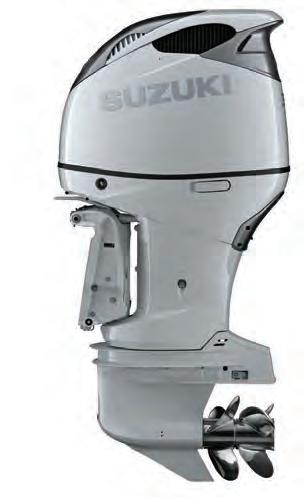



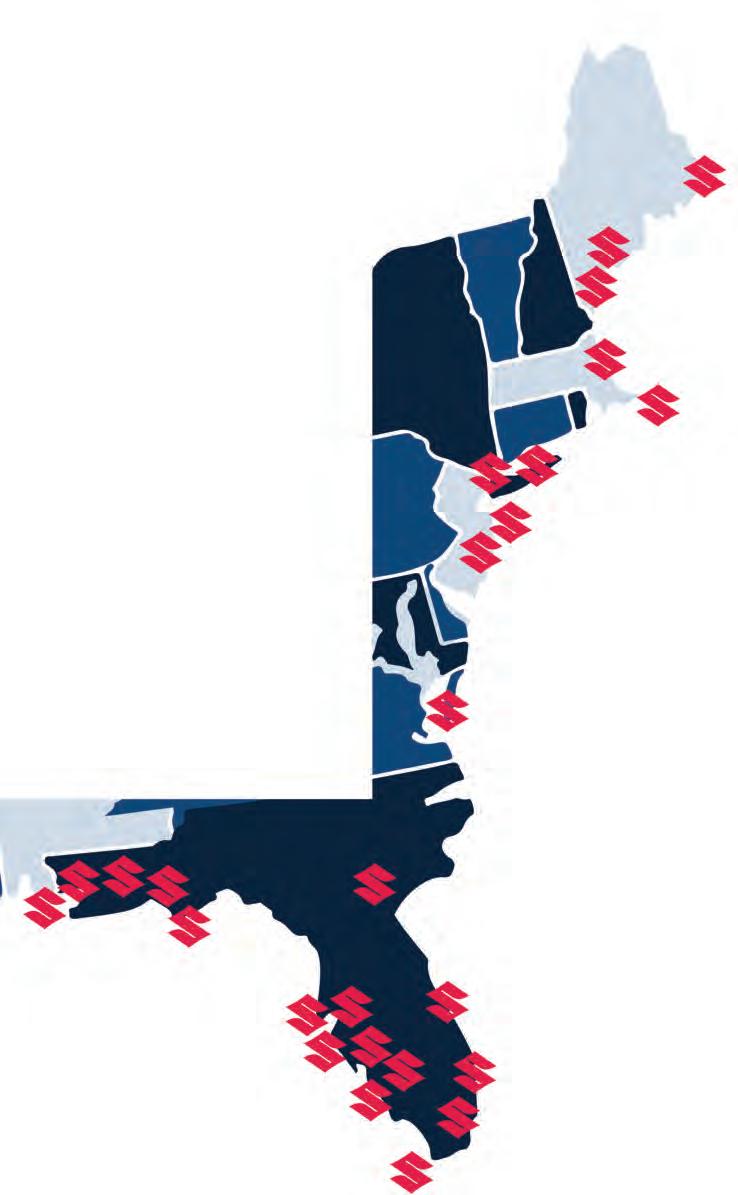

*Get with the Program!
When you purchase a new Suzuki outboard from an authorized Mastry RePower Center you qualify to become a member of the Mastry Suzuki Owner’s Edge. Owners receive an identifcation card that provides them with important information about their Suzuki outboard motor as well as a passport to additional benefts during ownership. Members enjoy a detailed engine maintenance schedule, Mastry Suzuki RePower Trade Program and special pricing from Mastry Suzuki Partners.
When summer rolls around and the tides align, there’s no place I’d rather be than Southwest Florida—with a rod in hand and visions of giant snook dancing in my head. !is year, my buddies and I made the pilgrimage with a simple mission: land a personal best. Big sh only. No compromises.
Dawn Patrol: First Cast, First Heartbreak
Our daily rhythm was dialed in: sh at rst light, break for lunch and a nap, then hit the water again at dusk. On our rst morning, we were thighdeep before sunrise, casting into the mystery of the early light. Within minutes, I hooked a brute. It crushed my lure and made a blistering run—until my line snapped clean. Devastated, but not alone; the others were tight on steady 20–25 inchers. We spot-hopped the rest of the morning, landing a solid variety of sh, then rested up, ready to tangle with giants again at dusk.
Evening Drama: Three Strikes !at evening, we waded into a legendary snook haunt. I connected again—with something even bigger. A er a long, nerve-wracking battle, my
leader snapped. Again. Moments later, John hooked into a monster that nearly emptied his spool… and then his leader failed too. We were stunned but red up. !e big girls were here.
I re-rigged and kept casting. Soon enough, another explosion on my paddle tail—this one the biggest yet. She breached once, massive and thick. !en, just like that, gone. My third heartbreak of the day. Lesson learned: if you’re chasing giants, bring the heavy gear.
Turning the Tide
By Capt. Michael Okruhlik

massive strike. !e sh peeled line o like a runaway train, then turned and charged. I cranked fast, heart in my throat. !e ght was clean, intense and unforgettable.
Day two brought redemption. Je landed his personal best—an impressive 34-inch snook on a 4” Knockin Tail Lure. I was eager to return to the spot that broke us, but a sudden evening storm shut us down.
Final Shot, Forever Fish
Our last morning o ered solid action—snook to 8 pounds, nothing to complain about. Still, I couldn’t shake the thought of one last chance that evening. No storms. No wind. Just at, silent water and that nal opportunity.
She measured a fat 38 inches, bottoming out my 15-pound scale. Hooked right in the jaw, leader untouched. My new personal best.
The Verdict
!is trip was a rollercoaster—equal parts frustration and triumph. But that nal evening, under a fading Florida sun, everything came together. And that’s what keeps us coming back: one cast away from glory.
Capt. Michael Okruhlik is the inventor of Knockin Tail Lures®, and the owner of www.MyCoastOutdoors.com.
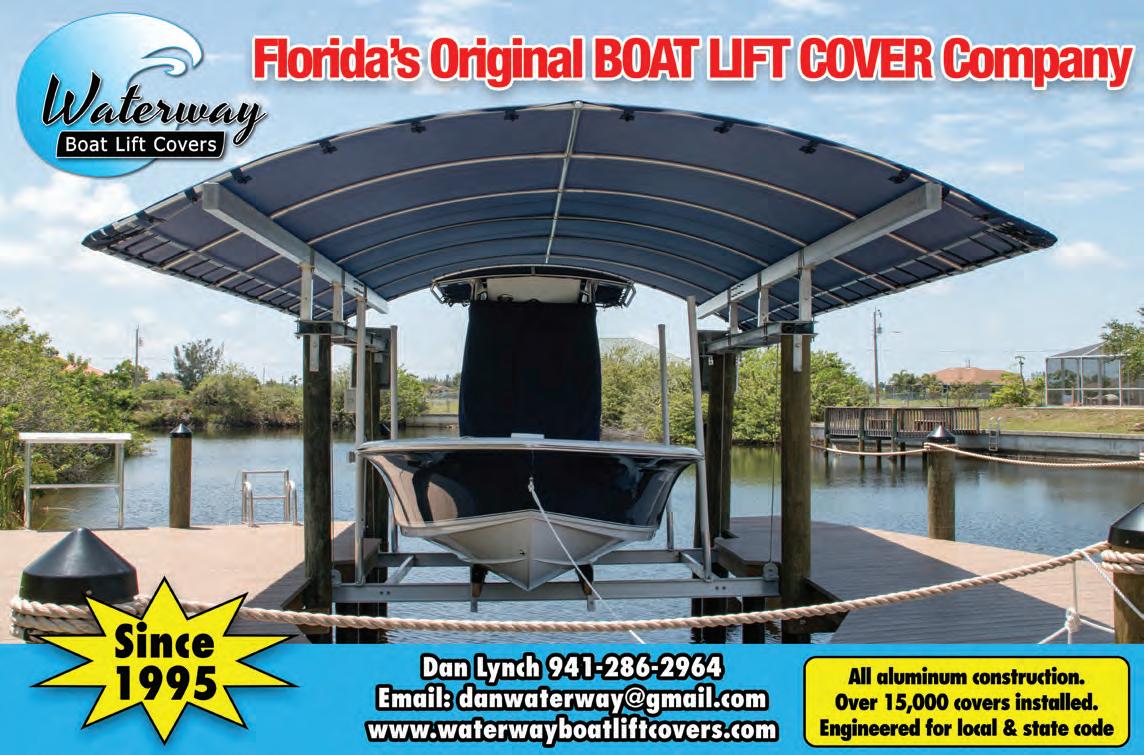
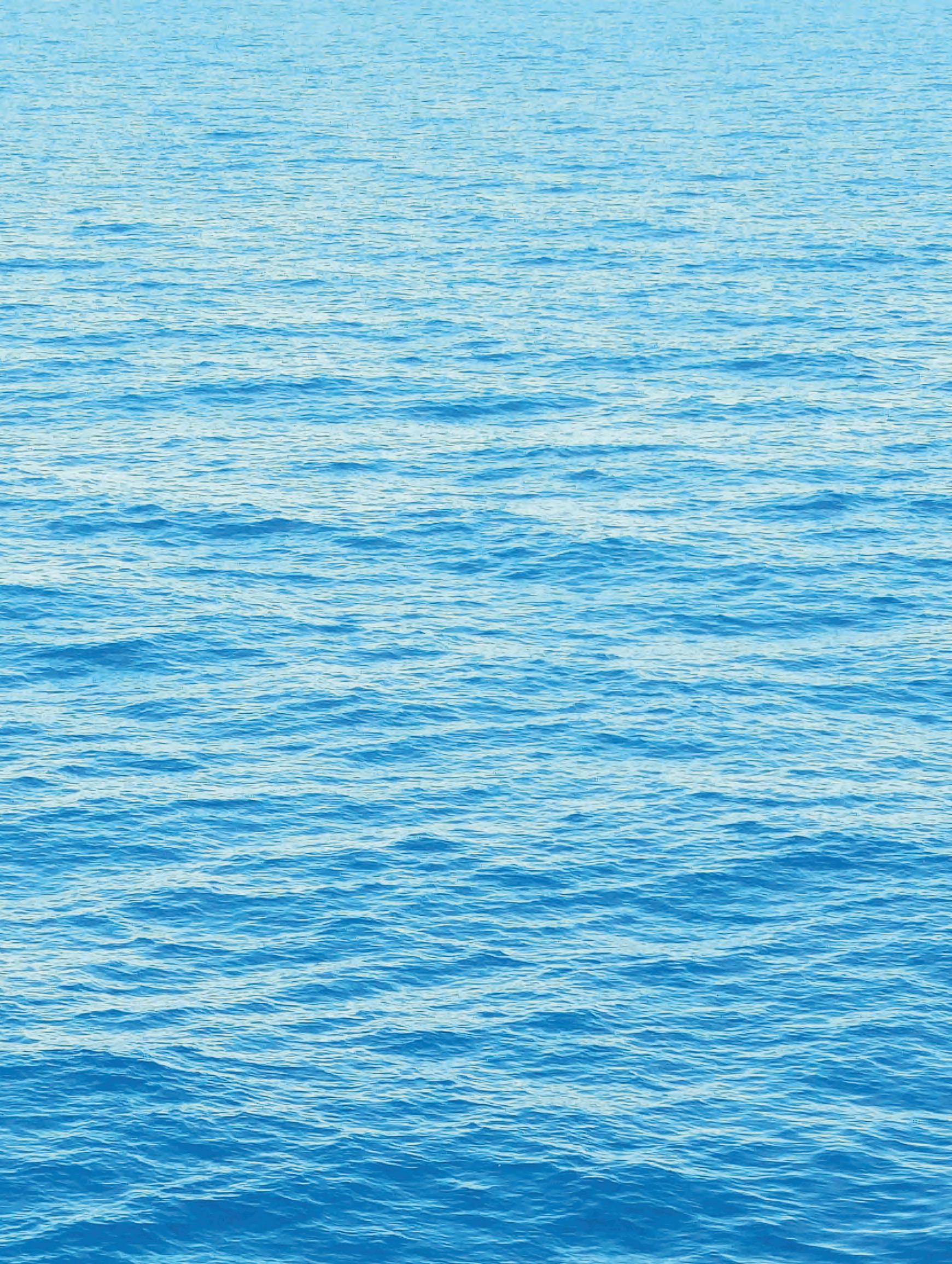

Franchise Owners
Eric & Gina Diesl
CONTRIBUTING WRITERS
Capt. Tommy Derringer St. Augustine-Inshore www.inshoreadventures.net
Capt. Robert Johnson St. Augustine-Offshore www.jodielynncharters.com
Capt. Kirk Waltz Mayport www.enterprisefishingcharters.com
Capt. Tony Bozzella Sisters Creek www.tonybozzella.com
Noel Kuhn Pier & Surf www.thesurfangler.com
Capt. Dominic Anderson Instagram: staugustine_fishing
WEBMASTER
Ryan Clapper
DISTRIBUTION
Bob Bueno
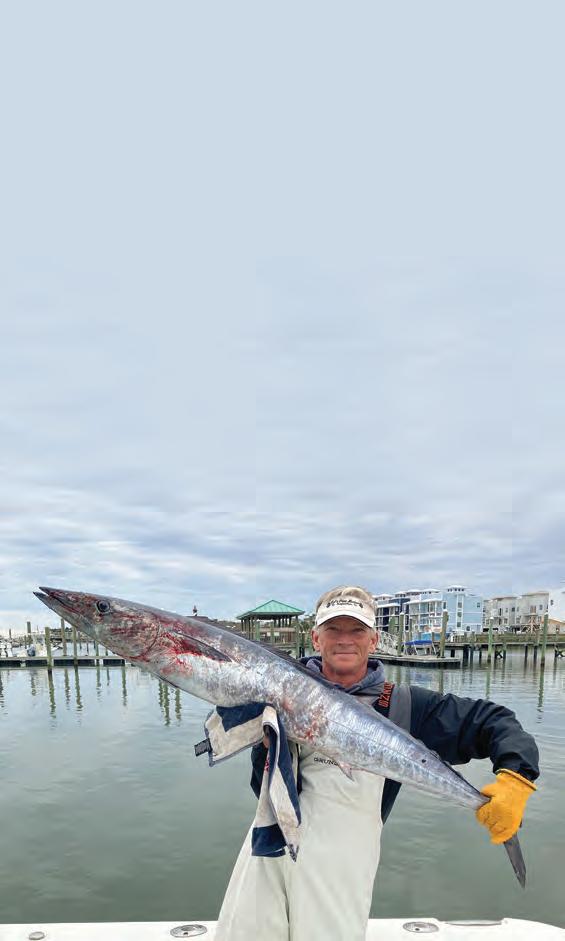
Dear Readers,
August fishing in Northeast Florida offers an exciting blend of inshore and offshore opportunities, thanks to warm water temperatures and active fish patterns. Inshore, anglers can expect productive days targeting redfish, speckled trout, and flounder along the grass flats, tidal creeks, and oyster beds. Early mornings and evenings are ideal for topwater action, especially near St. Augustine and the Matanzas River. Live shrimp and mullet are tried-and-true baits, but soft plastics and spoons also draw strikes from hungry game fish. Tarpon show up in greater numbers this time of year, cruising the beaches and inlet mouths, offering adrenaline-pumping battles for those willing to put in the time.
Offshore, August opens up chances to chase king mackerel, mahi-mahi, and occasional sailfish beyond the reefs and ledges. The 10–30 mile range can be especially rewarding, as bait pods attract pelagic species close to trolling lanes. Grouper and snapper fishing also heats up around wrecks and natural bottom areas, especially on calm days when smaller boats can run farther. Keep an eye on afternoon storms, as weather can change quickly. Whether fishing solo or with a charter out of St. Augustine or Palm Coast, this time of year offers abundant action and the potential for a cooler full of fresh catch
We are excited to share our Facebook page that will now feature more articles and links to local events happening throughout the month. www.facebook.com/CAMStAugustine> Please send in pictures ,tournament dates and ideas for articles to us at: gina@coastalanglermagazine.com.
We currently have a choice of advertising options available ranging from print & digital to video & social. If you would like us to add your business to our monthly delivery route or any other assistance you may need, please contact us:
Capt. Eric Diesl - 904-829-7571
Eric@coastalanglermagazine.com
Gina Diesl - 904-540-2311
Gina@coastalanglermagazine.com
You will find our St. Augustine edition in print for free at over 200 fine local retailers every month as well as online at coastalanglermag.com & vidmag.com.
Until next month, we wish you tight lines and warm breezes. - Capt. Eric & Gina

By Capt. Tommy Derringer
There’s all kinds of great fishing opportunities this month in NE Florida! From huge tarpon to tiling redfish in the grass, this is one

that will do the trick. This is also a great time to bust out the fly rod. Some of the best takes I’ve ever seen have come on the long rod using a
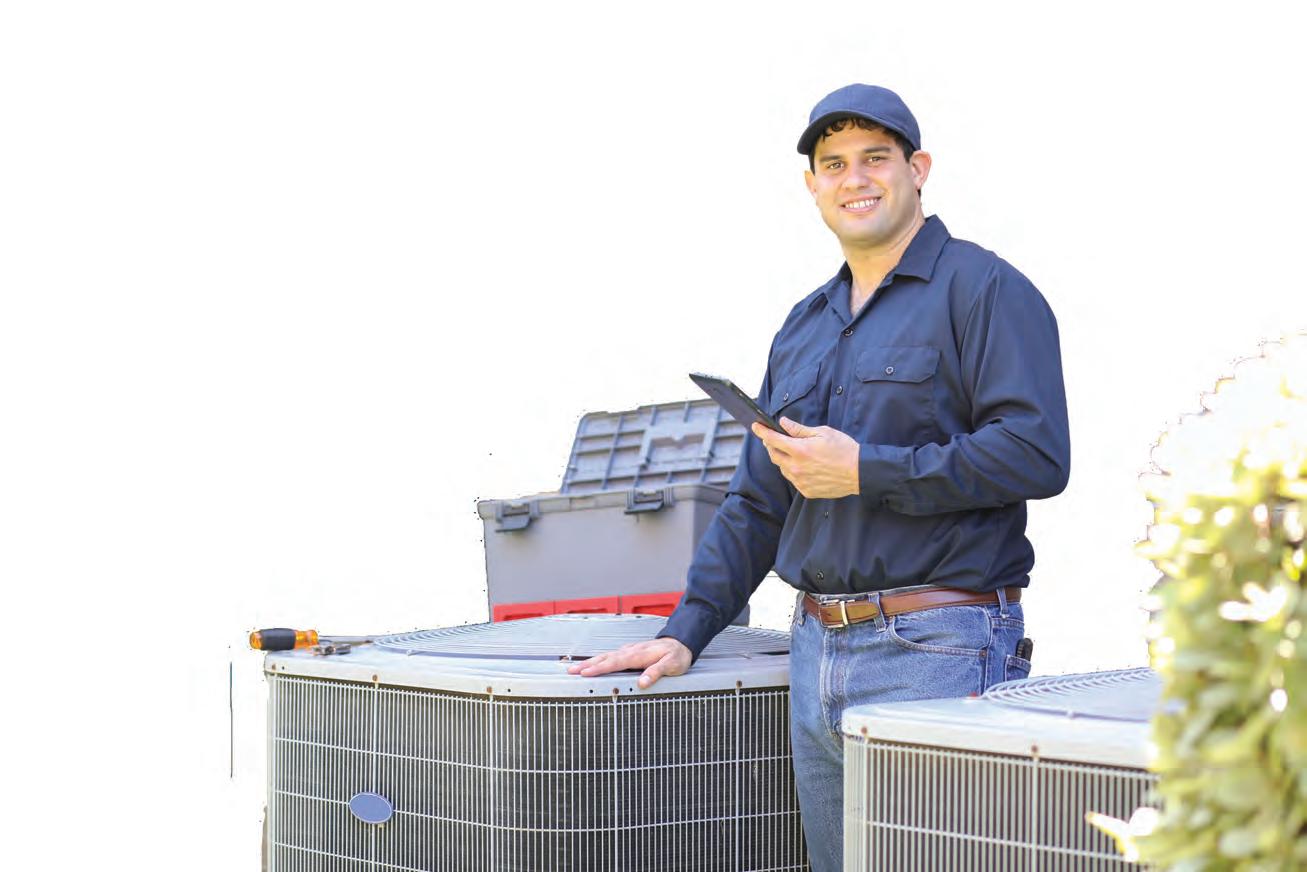
Bottom fishing remains the star of the season. Mangrove Snapper continues to peak around the full moon, while Vermillion and Mutton Snapper are also abundant. Here’s what you need to know:
• Mangrove Snapper: Best around the full moon.
• Vermillion Snapper: In full swing.
• Mutton Snapper: Plenty to catch.
Red Snapper Season Frustration
This year, NOAA Fisheries announced a RED SNAPPER season, but it was limited to just two days. This restriction is incredibly frustrating. It’s crucial for the public to voice their dissatisfaction to elected officials to push for a change. We must confront NOAA Fisheries and demand that they base decisions on comprehensive scientific data, acknowledging that Red Snapper stock levels are at an all-time high.
What Can We Keep?
While Gag Grouper is closed and Red Snapper remains in limbo, there are still plenty of species to target:
• Red Grouper • Scamp Grouper • Vermillion Snapper
• Mutton Snapper • Mangrove Snapper • Lane Snapper
• Amberjack • Gray Triggerfish • Cobia
Optimal Fishing Depths
With water temperatures warm everywhere, the best fishing spots are
Remember:
• Depths: From the beach to 21 fathoms.
• Find the Bait: Where there’s bait, there’s fish.
• Stay Hydrated: Bring plenty of water and sunscreen.
Introducing Kids to Fishing
August is a fantastic time to introduce kids to fishing, making it a fun, before, back-to-school activity:
• King Mackerel: Trolling is on fire from the beach to 100 feet.
• Amberjack and Cobia: Use live bait in the upper water column for the best results.
Final Tips for August fishing
• Stay Between 80 to 160 Feet: Optimal for bottom fishing.
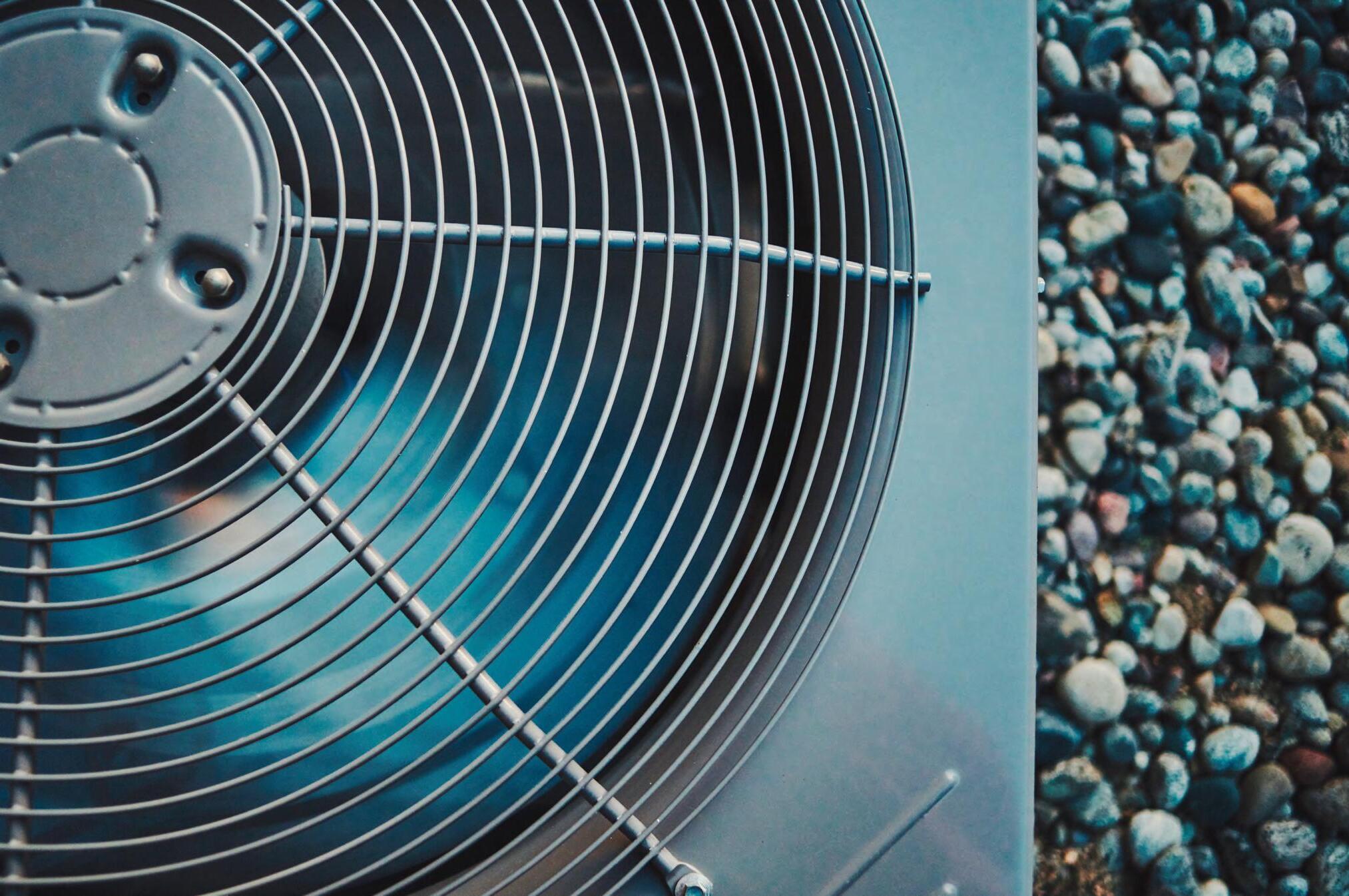
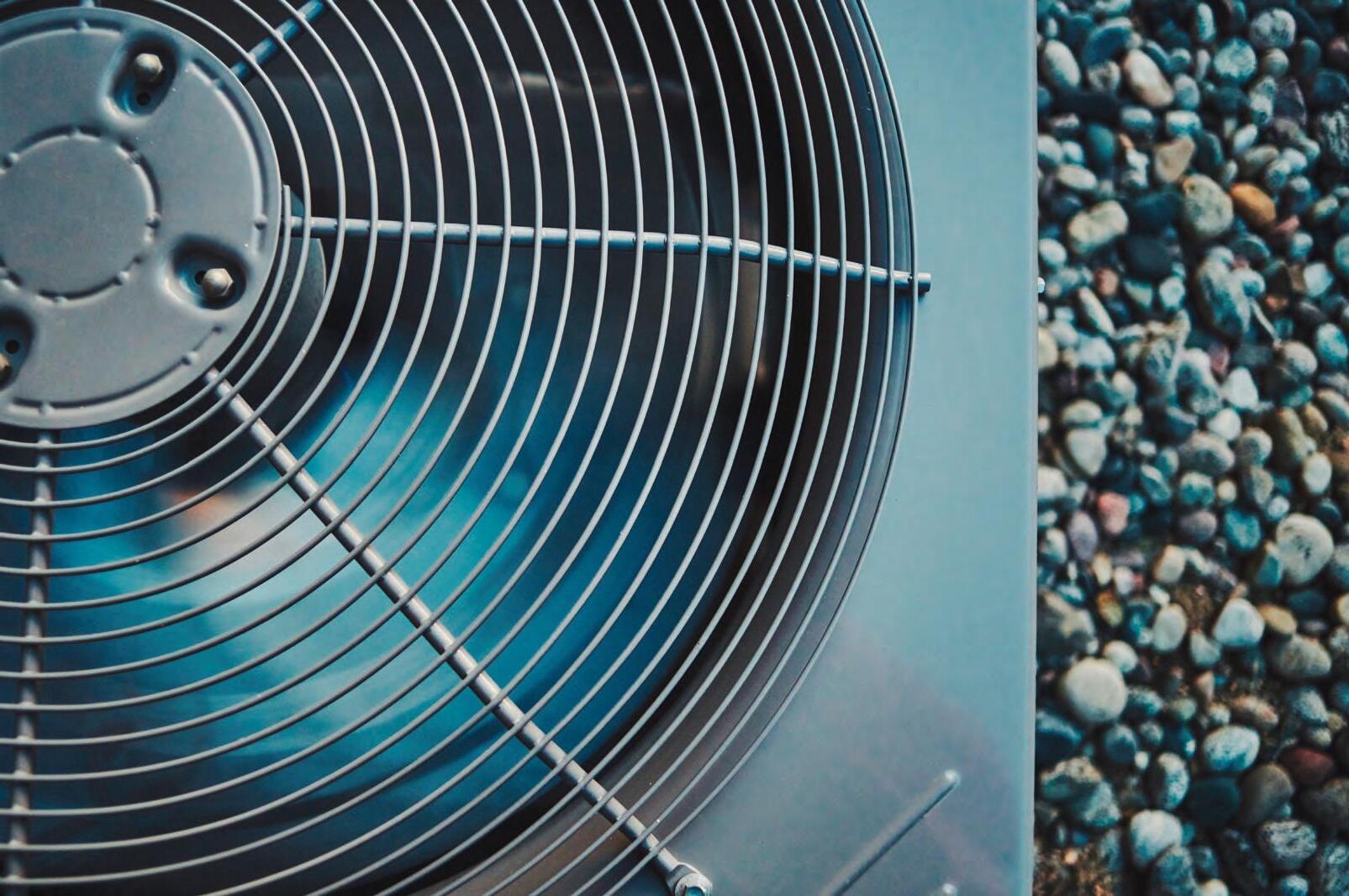


• Trolling: Stick to 40 to 100 feet.
• Essentials: Water, sunscreen, and live bait for Amberjack and Cobia. Enjoy the calm seas and make the most of your July fishing adventures.
Captain Robert Johnson (904)540-2628
Jodielynncharters.com
Jlfishing@bellsouth.net







By: Noel Kuhn
The Mullet are coming! The Mullet are coming! Twoeth by sea! So dust off the cast net and start practicing throwing pancakes. Sometime this month, every Mullet on the Florida coast will come pouring out of every inlet all in the name of love. When they reach the ocean, they will all hang a right then swim all the way south to the Straights of Florida. That is where they will start the reproduction cycle and will produce the next wave of Mullet fry. They get caught up in the Gulf Stream and flow back to the north. What this means for us is the most exciting time of the year.
Literally millions of Mullet come pouring down our beaches. What follows them is every predator in our waters. I am talking about Tarpon, Sharks, Jack Crevalle, Redfish, Seatrout, Flounder, Bluefish, Ladyfish, and


everything else that eats Mullet. The action that follows can be a strike on every cast.
The equipment you need can be kept very simple. First of all is a cast net then a five gallon bucket. Most importantly is your rod and reel spooled with mono or steel leader. It you are not interested in sharks, you can forego the steel leader. I like 50 pound monofilament for most species. If you want to target my favorites, which are Redfish, Flounder and Seatrout, you can drop down to 30 pound fluorocarbon and smaller hooks. A 2/0 circle hook tipped with a three to six inch Mullet does not last long in the surf. Early in the morning, cast these lively baits into just three feet of water. The Seatrout come in very shallow. For all the other species, just get your bait into the trough inside the sand bar.
This excitement usually lasts through September, sometimes into October. If you want to book a trip, I have a few openings for August and September. Let us get your string stretched! The picture is of a first time surf fishing teenager. We caught so many fish that morning!.
Noel Kuhn
Surf fishing guide and long distance casting coach. 904-945-0660
www.TheSurfAngler.com
By Dominic Anderson
Watertemps are bouncing around like your Zman shrimp up and down the docks and creeks. Which should be teaming with reds and flounder right about now. Trout are biting in those low light early morning and afternoon periods. Tarpon are on the bait pods and rolling by the bridges. Black drums are being found around deeper holes with structure and have been schooled up lately. Don’t be afraid to change your bait as everything is in right now whether it be shrimp, mullet, mudminnow, pogies or crabs these fish can be picky or overly aggressive this time of the year. Snapper is a bit late to the party but should really be turned on now.
Redfish are all along the docks and creeks right now. I went gigging the other night for flounder and saw tons of reds, let’s just say our red population is pretty healthy. We saw over a hundred Redfish in just one creek. You can be sure that if you throw that Zman shrimp enough times just cruising the creeks you will get tight. Figure out your cast and retrieve, try to dial down one area and really focus on where you’re getting bites as these fish tend to be in the same spot you caught them before. That goes for flounder as well. Dragging a live bait or an all white Zman on the bottom can oftentimes get you a couple meat mats (aka flounder). This time of the year I usually get reds and flounder while fishing for one or the other as a by catch. They will both eat mullet, pogies and shrimp without
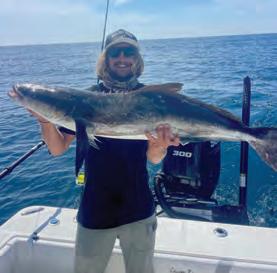

thinking twice. Everything loves shrimp though, not many predatorial fish are gonna turn one down. You can sure bet a black drum wont pass up a fidgeting shrimp. Most trout I catch this time of the year are on sub surface, top water lures or again, shrimp. Don’t stray away from using cut bait, sometimes all you need to do is set your bait apart this time of the year. With it being one of the hotter months fish are looking for an easy meal, something flashing and stinky. Cut ladyfish chunks will get you that gator trout or even the bull red you’ve been looking for. Those big trout will get way shallower than you think and love a stinky bait, throw it close to the bank in a creek near a deep hole and just wait! Tarpon are no longer playing shy; they are scattering bait all in the ICW (intercoastal waterway). Perhaps an Injured baitfish amongst the pod or even a baitfish with a splitshot or small weight on the line, something to set your bait apart from all the other bait the tarpon are just absolutely crushing bait right now. Invest in a chum bag. It will be useful when fishing for mangrove snapper and tarpon. They love a good thick haze of a chum trail.
Everything is biting pretty good right now and if you’re having a tough bite try different baits and really key in on the tides as the fish can really lock in on when they want to eat. The nearshore bite is still pretty good and should stay good through this month. Beware of those barracudas and sharks as they are just as bad as those summer storms brewing this time of the year. Now let’s go fishing! See you in the ditch or on the pond..
Capt. Dominic (904)-962-6184
Instagram:staugustine_fishing www.fishardy.com


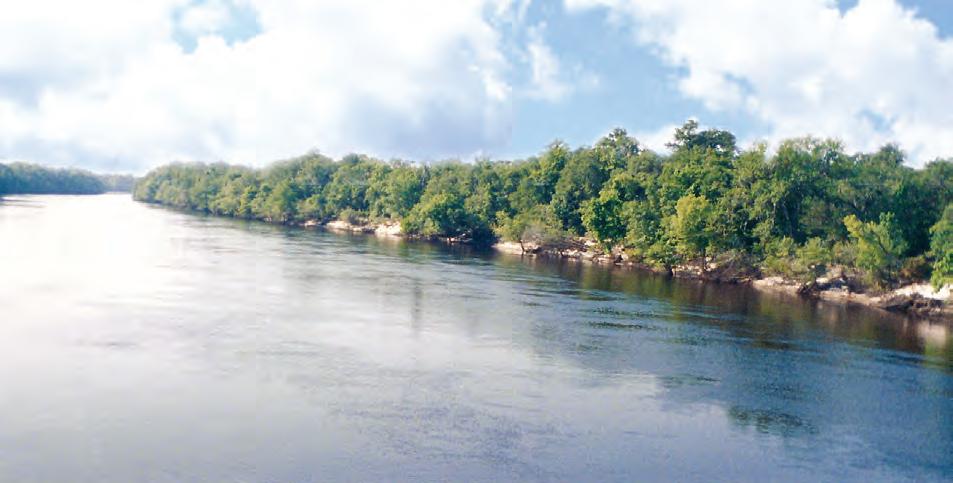

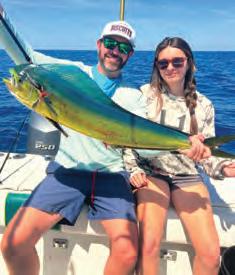
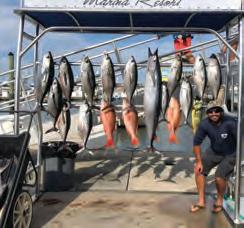

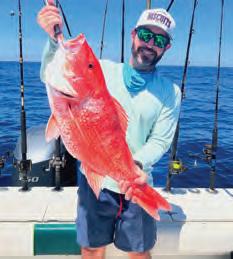
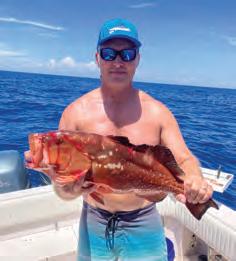







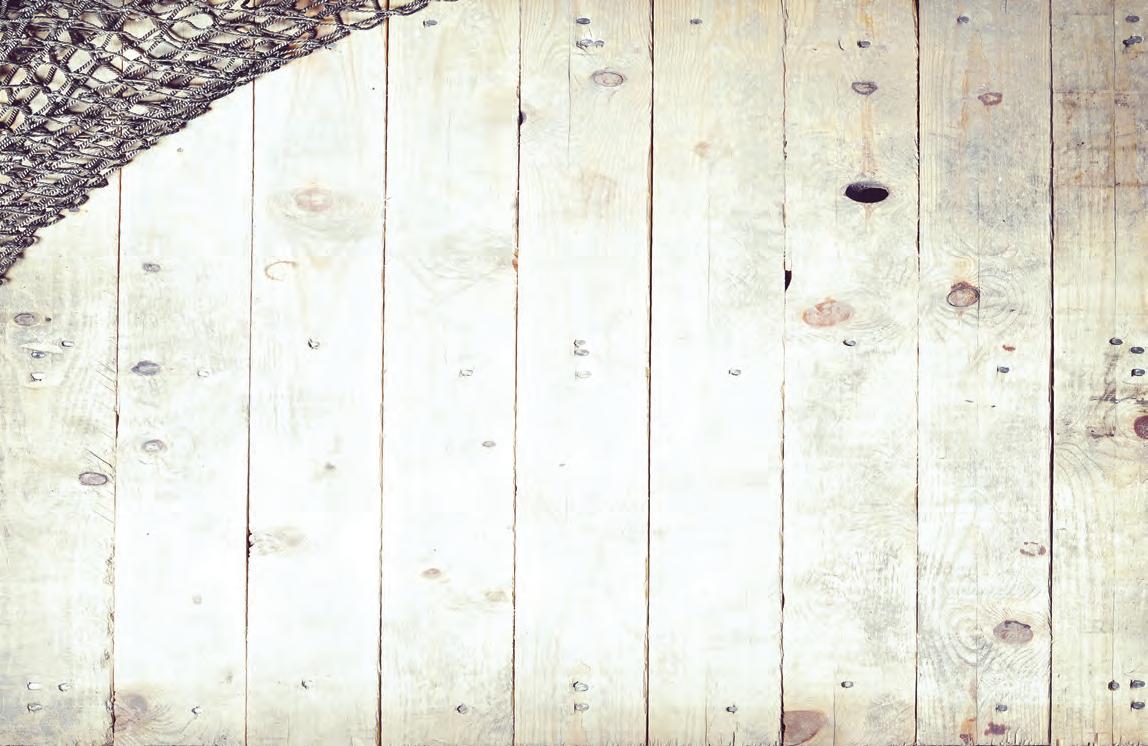

By: Greyson Webb
Your odds of success on the water can hinge on the gear you use, and the same principle applies when it comes to releasing fish. From size limits in fishing regulations to simply fishing for sport, there are many reasons why you might land a fish that you’ll need to release.
While released fish can go on to survive and be caught again, there are a variety of stressors a fish can experience throughout their landing and handling that can result in injury or death. Simply letting a fish go does not guarantee its survival, and the use of proper gear is a best fishing practice that can be adopted to help minimize stressors and improve a fish’s chance of recovery and survival.
What makes certain tools more effective in minimizing stress and injury than others? This article explores how the tools used throughout the catch and release process can boost the survival rates of released fish to keep populations healthy for the environment and anglers alike.
Non-Offset, Non-Stainless Steel Circle Hooks
It all starts with the hook—the first point of contact between angler and fish. The right hook will minimize hooking injury, reduce stress, and improve the ease of hook removal—all factors that influence a fish’s chance of survival. This is where the circle hook can make a difference. Circle hooks are designed to catch a fish in the jaw, which is the safest area if release is needed. Less likely to be swallowed or snag vulnerable areas like the gills or eyes, circle hooks decrease the odds of a potentially fatal hooking.
Not all circle hooks are the same, though. Non-offset circle hooks and non-stainless steel circle hooks go the extra mile in improving a fish’s chance of survival after release. Non-offset hooks are easier to remove than offset hooks, meaning less time out of the water for the fish, less bleeding caused by removal and less stress overall. In the case a hook cannot be removed, a non-stainless steel circle hook provides the benefit of degrading and shedding up to three times faster than a hook made of stainless steel or other non-corrodible metals.
Pro tip: If you’re wondering whether a hook is stainless or nonstainless steel, “Tournament Approved” labeling usually indicates non-stainless steel. For a quick test, you can also use a magnet to check the material. Simply place a magnet on a hook: if it sticks, the hook is stainless steel; if it doesn’t, you’ve got yourself a non-stainless steel circle hook.
While not necessary for landing every fish, landing nets are a functional tool that help shorten fight time, reduce stress on the line and rod, and prevent potential poking or piercing by hooks, teeth, or spines as you land your fish. However, landing nets with coarse mesh can inadvertently damage a fish’s delicate fins, scales, or protective slime layer—increasing their vulnerability to infections or injuries. Made from a smoother and friction-reducing material, knotless, rubberized landing nets help in preventing these potential traumas. With the protective slime layer preserved and more scales and fins intact, a fish landed with a knotless, rubberized net is a fish that has a better chance of survival after release.
If you prefer to use your hands to land a fish, using wet hands or rubber gloves provides similar relief to that of a knotless, rubberized landing net.
Dehooking Tools
The clock starts ticking the moment a fish is brought out of the water—its chances of survival dropping the longer it stays out of its natural environment. This is when a dehooking tool can help fish and anglers alike. Designed to rapidly remove hooks while causing minimal injury to the fish, time is not wasted struggling with a tough hook and the risk of injury during hook removal—for both the fish and the angler—is greatly reduced. It’s a win-win.
That said, there are situations where it is better to leave the hook in place. If a fish is deeply hooked in the gut or throat, attempting to remove the hook can often do more harm than good. In these cases, it is best to simply cut the leader close to the hook and leave it in the fish— particularly if it is a non-stainless steel hook, which has a greater chance of being shed. Research indicates this is less damaging and gives the fish the best chance for survival.
Descending Devices
If you land a fish and notice it has bulging eyes, bubbling scales, difficulty swimming below the surface, or organs protruding from the mouth or anus, it is likely suffering from barotrauma. Similar to the bends experienced by divers, barotrauma is an injury that can occur when a fish is brought from the high-pressure environment of deep waters to the low-pressure environment of the surface. This change in pressure can cause the gases in a fish’s swim bladder to expand, damaging organs and making it difficult for the fish to return to its original depth. Barotrauma is particularly common in deepdwelling species, such as some snappers and groupers. Untreated, a fish experiencing barotrauma becomes vulnerable to predators, the elements, and the injuries of barotrauma itself. Fortunately, the right tool can help reverse this condition.
Descending devices are tools that use added weights to lower fish back to their depth of capture. As the fish is pulled down the water column by a descending device, the swim bladder recompresses, and the fish is given a better chance at survival. Descending devices all work to return a fish to their original depth, but they come in different forms: inverted hooks, weighted crates, and lip clamps.
An inverted hook is a barbless hook with an added weight that is inserted either through the original hook hole or through the soft tissue on the fish’s lower jaw. Rigged to a rod and reel, the inverted hook guides the fish back to its proper depth. Once there, a gentle tug on the rod will release the fish if it hasn’t already slid free.
Similar to an inverted hook, the lip clamp is a descending device that uses an attached weight to pull a fish back to depth by attaching to a fish’s lower jaw. However, instead of piercing the jaw, the clamp securely grips it. A lip clamp can be pressure triggered or spring triggered for release. A pressure triggered lip clamp includes a pressure-sensor mechanism designed to automatically release fish once the desired depth is reached. A spring triggered lip clamp requires you to manually open the lip clamp by pulling up on the rod once the fish reaches the desired depth.
A weighted crate, often referred to as a fish elevator, is a crate with an open top—such as a milk crate—that has a rope attached to the closed bottom along with weights. To use one, place the fish in the crate, quickly flip it upside down into the water, and let the attached weights sink the contraption. Acting as a bottomless cage, the weighted crate will bring fish back to depth, where they recompress and can swim away on their own.
A good rule of thumb when using any descending device is to use one pound of added weight for every five pounds of fish.
Given their benefits, many of these tools—such as descending devices, dehooking tools, and non-offset, non-stainless steel hooks—are required to be readily available or in use when fishing for or possessing snapper grouper species in federal waters off the coasts of North Carolina, South Carolina, Georgia and Eastern Florida. Interested in learning more about the practices and requirements that give snapper grouper species a better chance at survival after release in the South Atlantic? Check out the South Atlantic Fishery Management Council’s Best Fishing Practices campaign for more information and ways to get involved.
01
THU 12:27 AM 5.13 H 06:31 AM -0.13 L 12:57 PM 5.55 H 07:11 PM 0.44 L 15 FRI 01:20 AM 4.91 H 07:26 AM 0.01 L 01:52 PM 5.60 H 08:15 PM 0.57 L
16 SAT 02:18 AM 4.70 H 08:24 AM 0.13 L 02:53 PM 5.60 H 09:19 PM 0.64 L 17 SUN 03:21 AM 4.54 H 09:25 AM 0.19 L 03:58 PM 5.60 H 10:22 PM 0.65 L
18 MON 04:27 AM 4.48 H 10:26 AM 0.17 L 05:03 PM 5.64 H 11:23 PM 0.59 L
19 TUE 05:32 AM 4.51 H 11:27 AM 0.08 L 06:05 PM 5.71 H
20 WED 12:21 AM 0.46 L 06:31 AM 4.62 H 12:25 PM -0.04 L 07:01 PM 5.78 H
21 THU 01:15 AM 0.29 L 07:25 AM 4.76 H 01:20 PM -0.16 L 07:52 PM 5.79 H
22 FRI 02:03 AM 0.13 L 08:14 AM 4.89 H 02:11 PM -0.20 L 08:38 PM 5.73 H
23 SAT 02:46 AM 0.01 L 09:01 AM 5.00 H 02:58 PM -0.14 L 09:21 PM 5.58 H
24 SUN 03:27 AM -0.01 L 09:45 AM 5.08 H 03:43 PM 0.04 L 10:03 PM 5.38 H

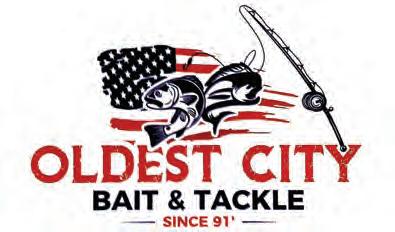


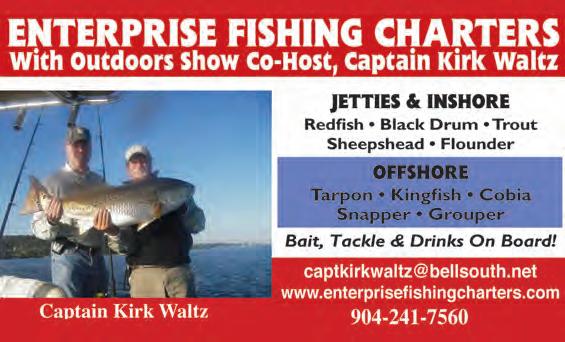

Advertising Account Executives -- Coastal Angler Magazine is seeking experienced Advertising Account Executives in St. Johns, Flagler or Putnam County. Our ideal candidates will have a minimum of two years’ previous advertising sales experience and be familiar with the creative requirements of the advertising field. We are looking for advertising industry professionals who understand relations selling and who can manage multiple accounts and professional fol low-up as part of a daily routine. In an era when other print publications are shrinking, Coastal Angler Magazine, through its co-publisher business model, has achieved exponential growth and industry leader status. Qualified candidates interested in the position should submit a one-page resume to the contact information provided.
August 1-3, 2025
Mason’s Voice Presents North Florida King of the Beach www.nfkingofthebeach.com
August 15-16 2025
Flagler Sportfishing Club-Club Tournament-Overnight www.flaglersportfishing.com
July 16th
Flagler Sportfishing Club-Club Tournament-Flounder www.flaglersportfishing.com
September 27th-28th
Phoenix Bass Fishing League Tournament
Palatka Riverfront Park, Palatka FL
October 4th 2025
904 Redfish Tournament
Palm Valley Outdoors Bar & Grill, Ponte Vedra Beach, FL
November 11-15 2025
El Pescado Billfish Tournament
Camanche Cove Marina, St. Augustine, FL









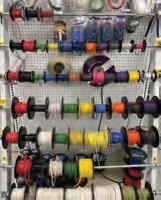







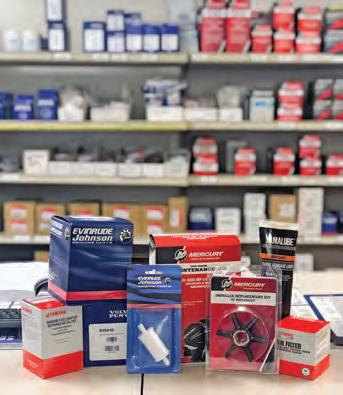
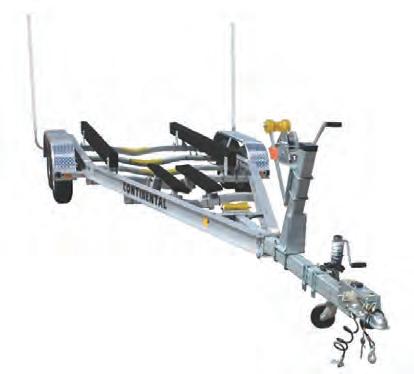







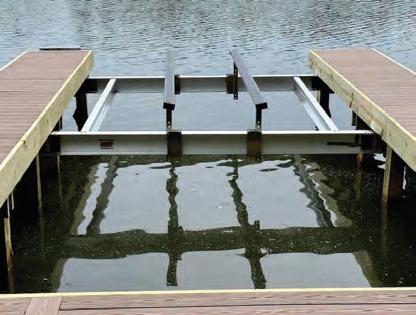
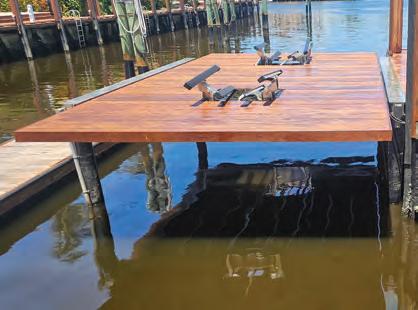
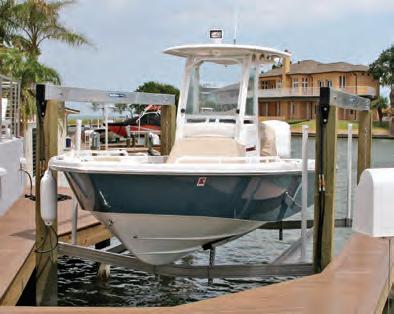


ShoreStation hydraulic boat lifts are a reliable choice for coastal residents and boating enthusiasts alike. Their strong construction, made with corrosion-resistant materials, allows them to withstand harsh environmental conditions, including sun, storms, and saltwater damage. ShoreStation provides a steadfast solution for protecting waterfront investments, o ering peace of mind to owners in the Sunshine State.
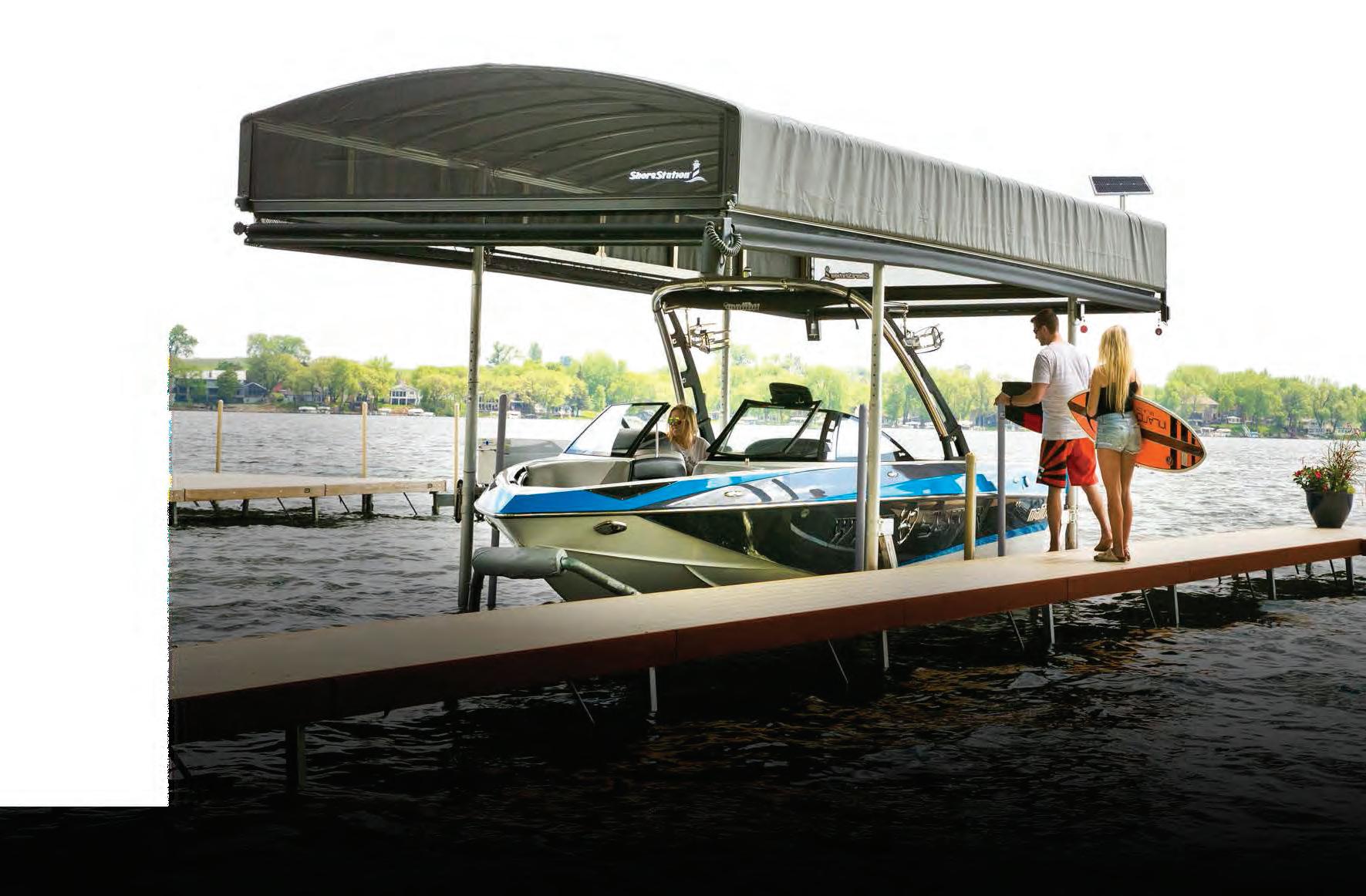
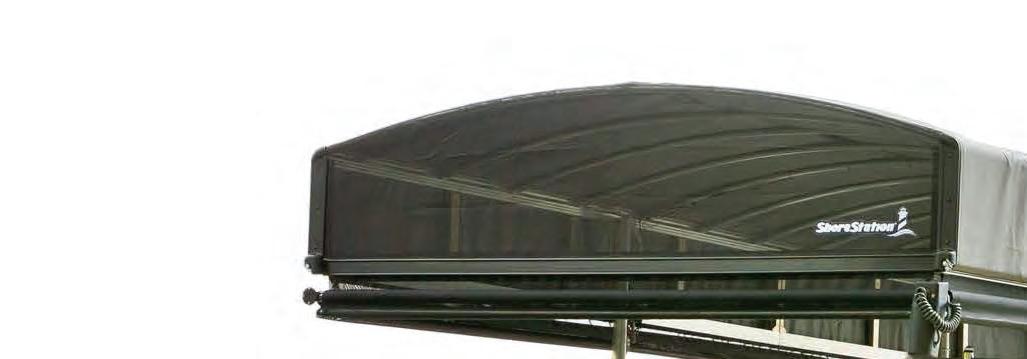
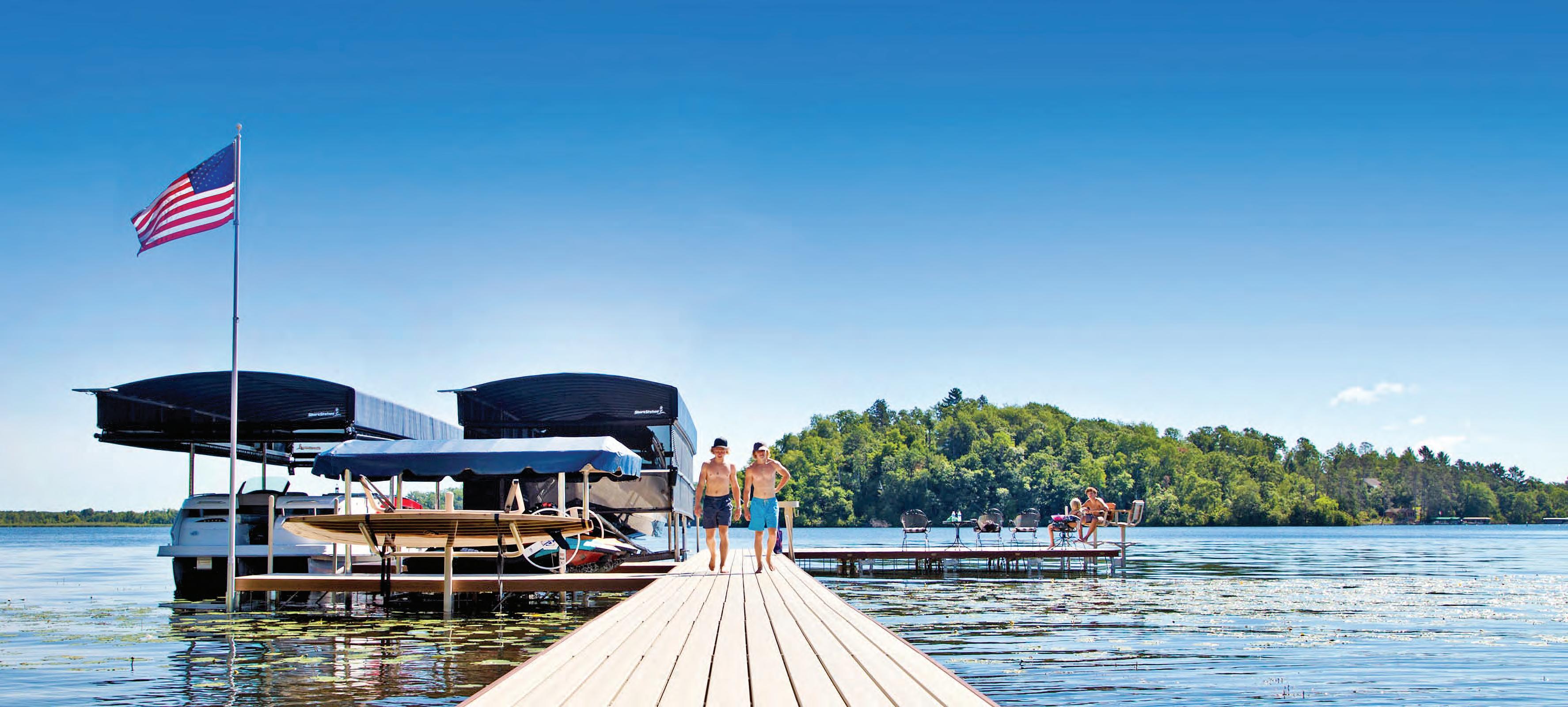


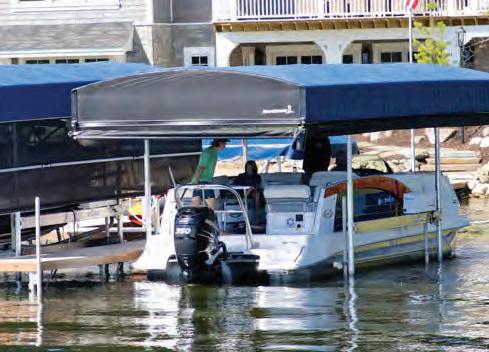
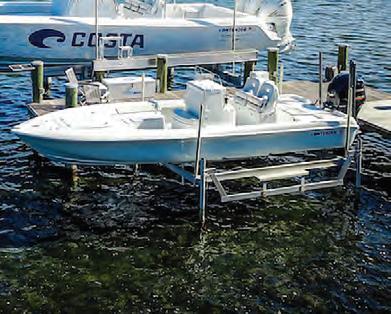
Equipped with exceptional weather resistant fabric and breathable SunTex 80 woven mesh ends for maximum protection and durability,

Made from the highest quality materials, our innovative hydraulic boat lift is one of the fastest and safest lifts on the market today. When you have a hydraulic lift, there’s no need to worry about wind and waves getting in your way. This lift will give you con dence to safely land and secure your boat in less-than-ideal conditions.
Never miss another moment on the water. Power your lift with clean, free solar power. Our speedy 20 watt charger features solar regulator drainage protection, saving your battery from permanent damage caused by overcharging.



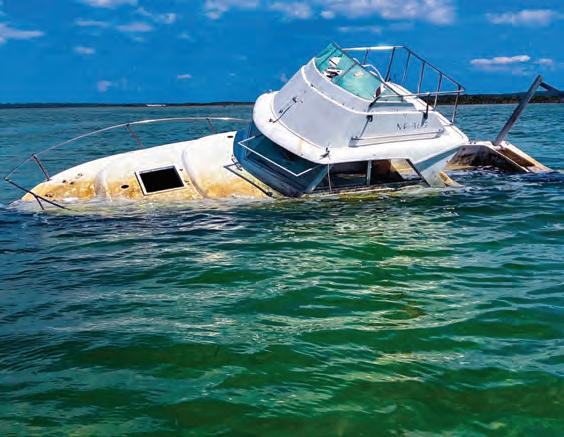
The Florida Fish and Wildlife Conservation Commission (FWC) is preparing to implement a new law aimed at strengthening vessel accountability and enhancing protections for Florida’s waterways. Senate Bill 164, signed into law by Governor Ron DeSantis on June 19, went into e ect on July 1, 2025. is legislation is designed to help reduce the number of at-risk and derelict vessels across the state and improve enforcement tools for FWC o!cers and partner agencies. Key provisions of the new law include:
• Clari ed Ownership Standards: e de nition of “vessel owner” is clari ed, and a valid vessel title will now serve as prima facie (presumed) evidence of ownership.
• Stronger Requirements for At-Risk Vessels: Vessel owners must now complete an E ective Means of Propulsion (EMP) evaluation upon request by law enforcement. If an o!cer has reason to believe the vessel lacks an e ective means of propulsion and the owner is present, the evaluation must be conducted immediately or within 48 hours if noti ed otherwise.
• Public Nuisance Vessel Designation: A vessel may now be declared a public nuisance — subject to removal like a derelict vessel — if the owner
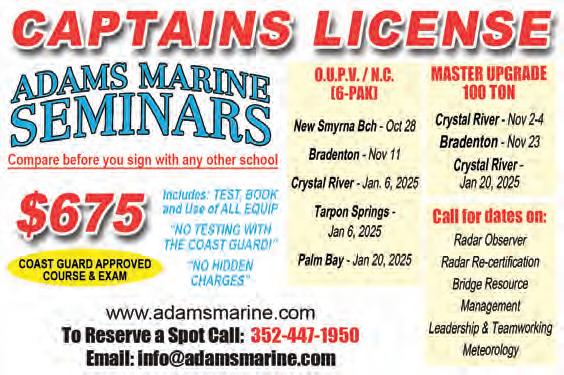
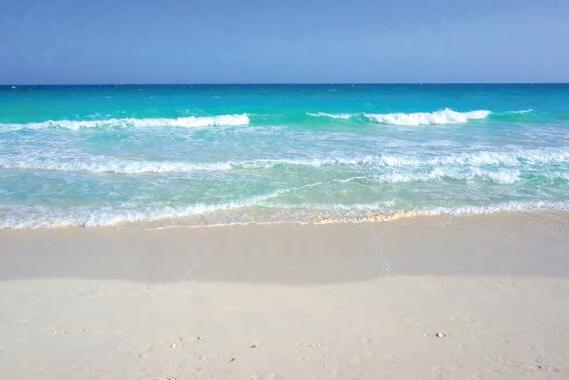


receives three citations related to any at-risk conditions within a 24-month period, including unpaid citations or failures to appear in court.
• Expanded Noncriminal Infractions: Violations such as expired registration and long-term anchoring may now be addressed through mailed noncriminal citations from law enforcement.
• More Flexible Use of Removal Funds: Derelict Vessel removal funding may now be used not only for removing DVs but also for preventive removals under the Vessel Turn-In Program and for public nuisance vessels.
• Harsher Penalties for Repeat DV O enders: First o ense - First-degree misdemeanor; Second o ense - ird-degree felony; ird o ense - Seconddegree felony.
• No Liveaboard on Derelict Vessels: It is now a rst-degree misdemeanor to live aboard a vessel that has been declared derelict by the court or the owner has not requested an administrative hearing.
“We have seen increasing success in our e orts to combat the ongoing derelict vessel problem in Florida’s waters,” said Capt. Travis Franklin, leader of the FWC Derelict Vessel Removal and Prevention Program. “ is new legislation enhances our e orts to not only remove derelict vessels but also prevent at-risk vessels from becoming derelict.”
Derelict vessels remain a priority for the FWC, and the multi-year initiative to reduce the number of derelict vessels on Florida’s waterways is ongoing. ese vessels pose serious risks to seagrass beds, marine life, navigation, public safety and property. e Boating and Waterways Section is leading this statewide e ort in partnership with local governments and law enforcement.
Leaving a vessel in a derelict condition is a crime. Derelict vessels, including those that are sinking, grounded, stripped or lacking vital systems, threaten both people and Florida’s natural resources.
FWC has removed nearly 200 vessels through the Vessel Turn-In Program and is actively taking applications from at-risk vessel owners. Vessel owners can call VTIP specialists at the FWC for more information on the program at 850-488-5600 or visit the VTIP website at MyFWC.com/boating and click on “Vessel Turn-In Program” on the second slider at the top of the page.
For more information on derelict or vessels at risk of becoming derelict, visit MyFWC.com/Boating and select “Waterway Management” followed by “Derelict Vessel Removal Program.”
Florida Fish and Wildlife
Conservation Commission (FWC)
O!cer Wil Raker certi ed a new state record spotted bass, caught by angler Joe Durden from Blountstown.
e sh weighed 3.93 pounds and measured 18.25 inches in length.


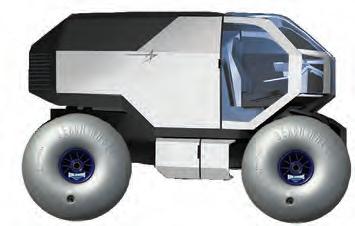


Durden was excited to catch his spotted bass on the Apalachicola River during the Fi h Annual Liberty County Bulldog Booster Bass Tournament out of Bristol Landing.
“I knew right away this was potentially a state record,” said Durden. “ is was the biggest spotted bass I had ever seen on the river.”
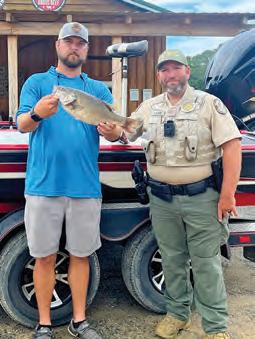
Durden, an avid bass tournament sherman, caught his spotted bass on a crankbait while using LiveScope technology. A er landing the sh, an FWC freshwater sheries biologist met with Durden to discuss his catch and verify it was a spotted bass.
“Catching a state record sh is a tremendous accomplishment for any angler,” said Andy Strickland, sheries biologist with FWC’s Fish and Wildlife Research Institute. “Particularly a record that’s held the test of time for 40 years.”
e previous spotted bass state record was 3.75 pounds, caught by angler Dow Gilmore on June 24, 1985, on the Apalachicola River.
Anglers can check state records by visiting MyFWC.com/Freshwater and clicking on “State Record Fish.”
It’s no fsh tale when you run with a John Deere. You can get everything done faster and easier, so you get more time on the water. Plus, our special offers make them the catch of the day.



The boating industry is jumping onboard with Dometic’s revolutionary DG3 Gyrostabilizer, due to its groundbreaking spin-up and spin-down times, energy e%ciency and superior performance in all types of sea conditions. is solution has literally taken vessel stabilization to a “Whole New Level,” capturing the attention of boaters and boat builders around the world. e !rst in a planned line of advanced stabilization solutions by Dometic, the new DG3 is targeted at the 35- to 41-foot !shing boat market.
Soon a er Dometic won the 2025 NMMA Innovation Award at the Miami International Boat Show for the DG3, leading American boat builder Regulator Marine announced that its new-for-2025 Regulator 35 Center Console would be o ered with Dometic’s DG3. “We are honored to have a respected builder like Regulator come onboard,” said Dometic Marine Segment President Eric Fetchko. “ eir latest center console agship is an ideal match for our system in terms of size, hull performance, overall quality and a wide range of premium features and technology. It’s also a wonderful platform to showcase our advanced capabilities, including energy e%ciency that enables o shore use without the need for an onboard generator,” added Fetchko.
e DG3 reduces spin-up time by more than 65%, reaching full readiness in just 16 minutes, compared to the typical 50 minutes required by current systems in the market. is means you’ll
get out on the water and out to distant !shing grounds faster. e system’s downtime is equally impressive, fully lowering in just 20 minutes, a signi!cant improvement over the eight or more hours (15X faster) required by current systems.
Dometic also pioneered innovations in energy storage and recapture, enabling the battery to recharge e%ciently. DG3 uses Dometic’s proprietary, industry-proven Inverted Roller Screw technology for true dynamic control and signi!cantly improved roll reduction performance over a wide range of sea sates. In addition, the push-pull motion of Dometic’s all-electric procession actuator is used to create power that contributes to running the system. During spin down, Dometic’s regenerative braking technology recharges the system’s dedicated 48V Lithium-Ion spin-up battery for the next use. Overall, the DG3 reduces power consumption by an impressive 40% compared to other gyros on the market.
DG3’s Inverted Planetary Roller Screw technology and proprietary all-electric procession actuator provide dynamic control of the gyro hemisphere for instant response to vessel movement and superior comfort over a full range of sea states. is allows DG3 to react faster to heavy wave motions, while also smoothing the ride in small and long period waves, where current gyros are less e ective.
Durability and reduced maintenance were also key goals for Dometic engineers. Dometic’s


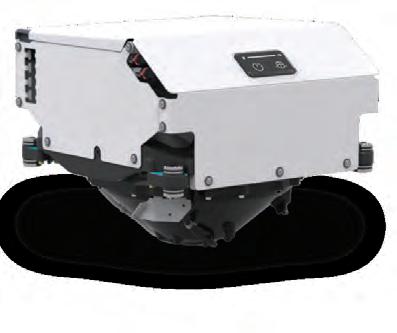
durability, minimizes required service, and reduces total cost of ownership. Featuring a slower-spinning ywheel, larger, more robust bearings, patentpending inner race cooling, parallel path cooling, and a titanium heat exchanger, the DG3 is designed to stay cool and operate reliably for the long run.
Dometic designed the DG3 as an easy “dropin” replacement for other comparably sized systems available in the market today. e DG3 !ts within the same footprint and clearance speci!cations and features reversible mounting feet to address common challenges encountered by installers. To meet the needs of today’s boating market, Dometic’s DG3 is compatible with 12-, 24- and 48volt house battery systems.
To learn more about how Dometic’s DG3 can take your o shore shing adventure to a whole new level, visit www.dometic.com.





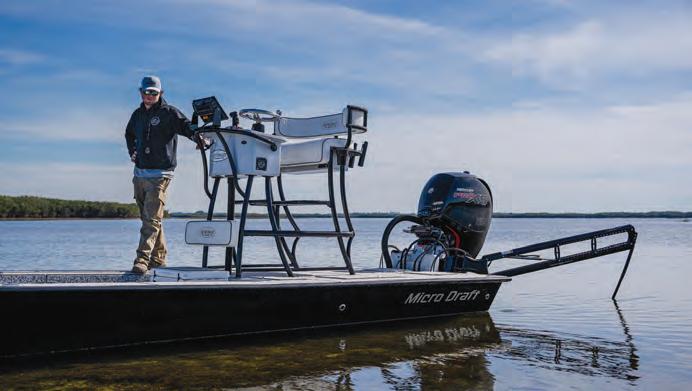



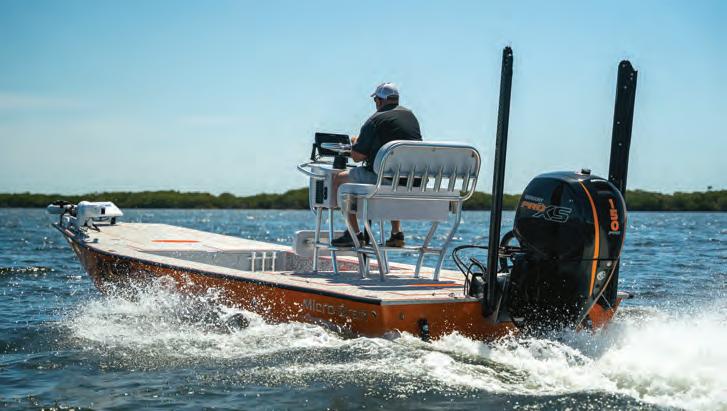




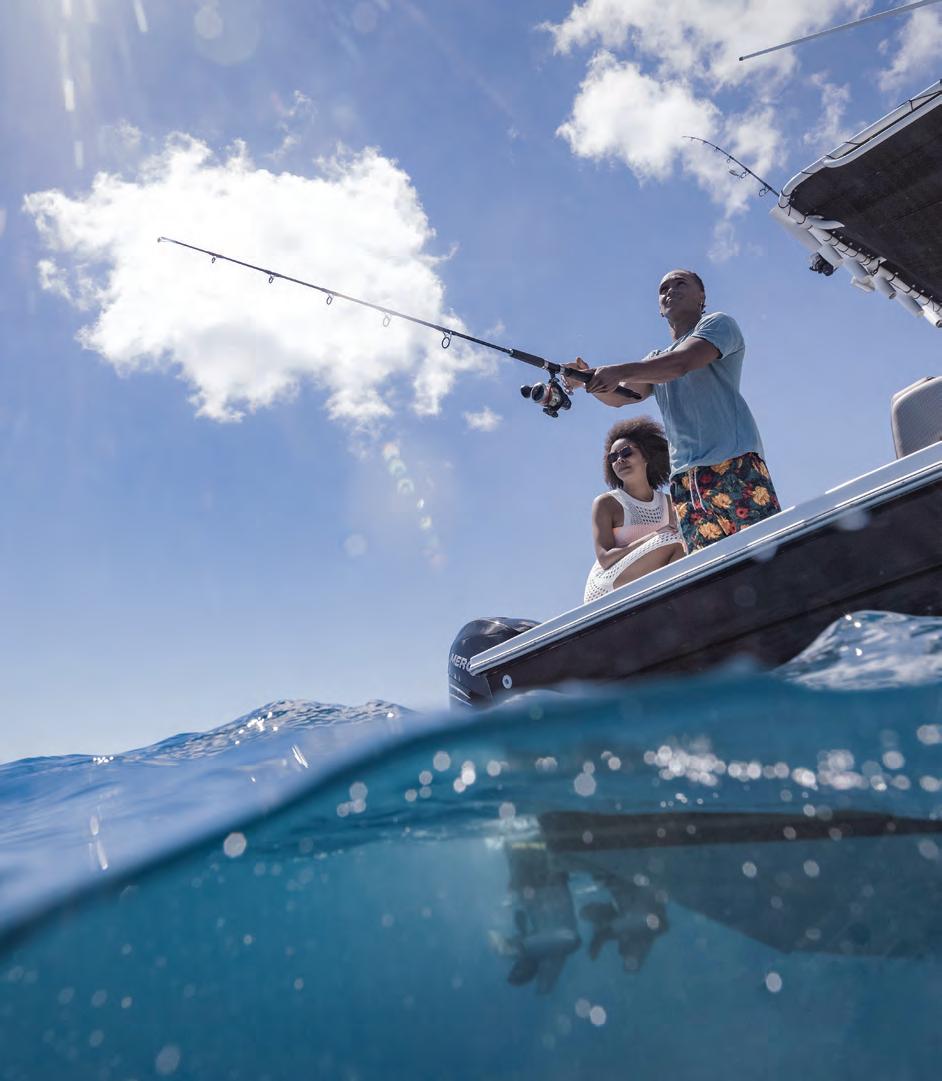
Nestled in the heart of the Caribbean, the US Virgin Islands embody a harmonious blend of natural beauty, cultural vibrancy, and laid-back serenity. ese islands are more than just a picturesque getaway; they are a living testament to nature’s rhythm and resilience, e ortlessly in tune with the world around them.
With no passport required for U.S. citizens, from the moment you arrive, the islands’ natural rhythm is palpable. e gentle sway of palm trees, the soothing sound of surf crashing against sandy shores, and the vibrant melodies of local music all echo the heartbeat of this tropical paradise. e islands’ lush landscapes, with their verdant hills and crystal-clear waters, mirror the steady pulse of life that sustains the local ecosystems and communities alike.
e US Virgin Islands’ environment is a symphony of biodiversity with world class shing and diving. ese natural elements are not static; they dance in harmony, in uenced by the tides, wind, and seasonal changes—further emphasizing the islands’ intrinsic rhythm. is delicate balance underscores the importance of conservation e orts, ensuring that future generations continue to experience the islands’ natural cadence.
Culturally, the US Virgin Islands are equally in tune. e music, dance and festivals re ect a vibrant heritage rooted in African, European and Caribbean traditions. e spirited calypso beats
and reggae rhythms are expressions of life's ongoing dance—celebrating resilience, community and joy. ese cultural expressions are an extension of the islands’ natural rhythm, showcasing how human life here moves seamlessly with nature’s ow.


In a world o en dictated by chaos and rapid change, the US Virgin Islands serve as a reminder of the beauty of being in sync with nature’s tempo. eir natural, cultural and ecological rhythms o er
a blueprint for sustainable living and harmony. As travelers and residents alike continue to embrace this rhythm, they uphold a legacy of balance—one that celebrates life’s natural ow and the enduring spirit of these remarkable islands. In the US Virgin Islands, being in rhythm isn’t just an ideal; it’s a way of life.

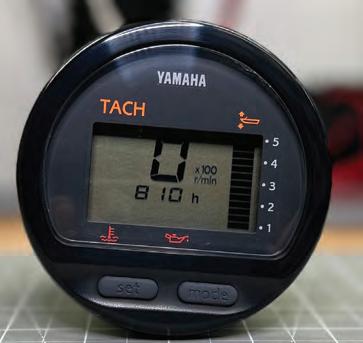

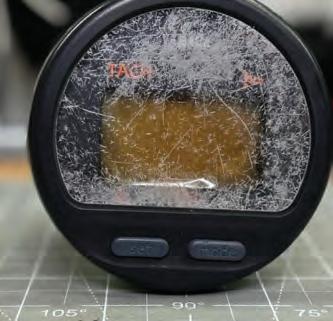


In some parts of the country the bass spawn is already starting to come to an end like it is down here in Florida and others may not start up for another couple months. Regardless of your phase, this post spawn !shing tip should help you dial in your !shery when the time is right for you! One thing is the same for every !shery and every species of bass a er they spawn, they are hungry! is can create some awesome and fun !shing opportunities that have led me to some of my best days on the water.
Typically a er the largemouth bass spawn, there are other !sh that will then begin their spawn. I’m not a scientist, but I’m sure this has a lot to do with the speci!c timing of why the bass do their thing when they do. In most areas of the southern United States, I know that the bluegill and o en times the shad, if they are in your lakes, will start to spawn very shortly a er the bass !nish up. Bass will use every advantage they can when these bait!sh group up to feed back up a er a long couple weeks or months protecting their eggs in the shallows and this can make for some fun !shing.
Smallmouth bass and spotted bass are very similar as well in the aspect of taking advantage
TYLER WOOLCOTT

of bait schools when they get in that post spawn phase. I have seen them group up and attack shad, perch, alewife schools and any other bait that is readily available to them. Typically I do a lot of my searching for these things with my electronics and forward facing sonar which is a very helpful tool for learning !sh activity and seeing what’s going on under the surface of the water.
Most of the time you can use clues you can visually see with your eyes to help you !nd this feed that is going on. Typically birds feeding on the water is an awesome sign of a feeding frenzy and that is one thing I ALWAYS look for. Also always keep your eyes peeled for !sh blowing up on the surface or shad ickering as well. Sometimes the very smallest clue can lead you to much larger picture. Birds standing on speci!c banks, the sound of bluegill popping around vegetation, anything that clues you in to bait in the area usually means the bass aren’t very far.
Hopefully this tip will help you when the !sh in your area get into the post spawn feed! Find the bait, you will !nd the bass! I always try to duplicate the bait!sh with whatever kind of lure you are throwing. Bluegill eaters - I will

throw a frog or a swimming in bluegill colors, etc. Shad eaters - I will throw white or silver topwaters and crankbaits, etc. Always match the hatch if possible! Good luck out there this season and tight lines!
Tyler Woolcott is a professional tournament angler and guide. Check out his website at www.tylerwoolcott shing.com.

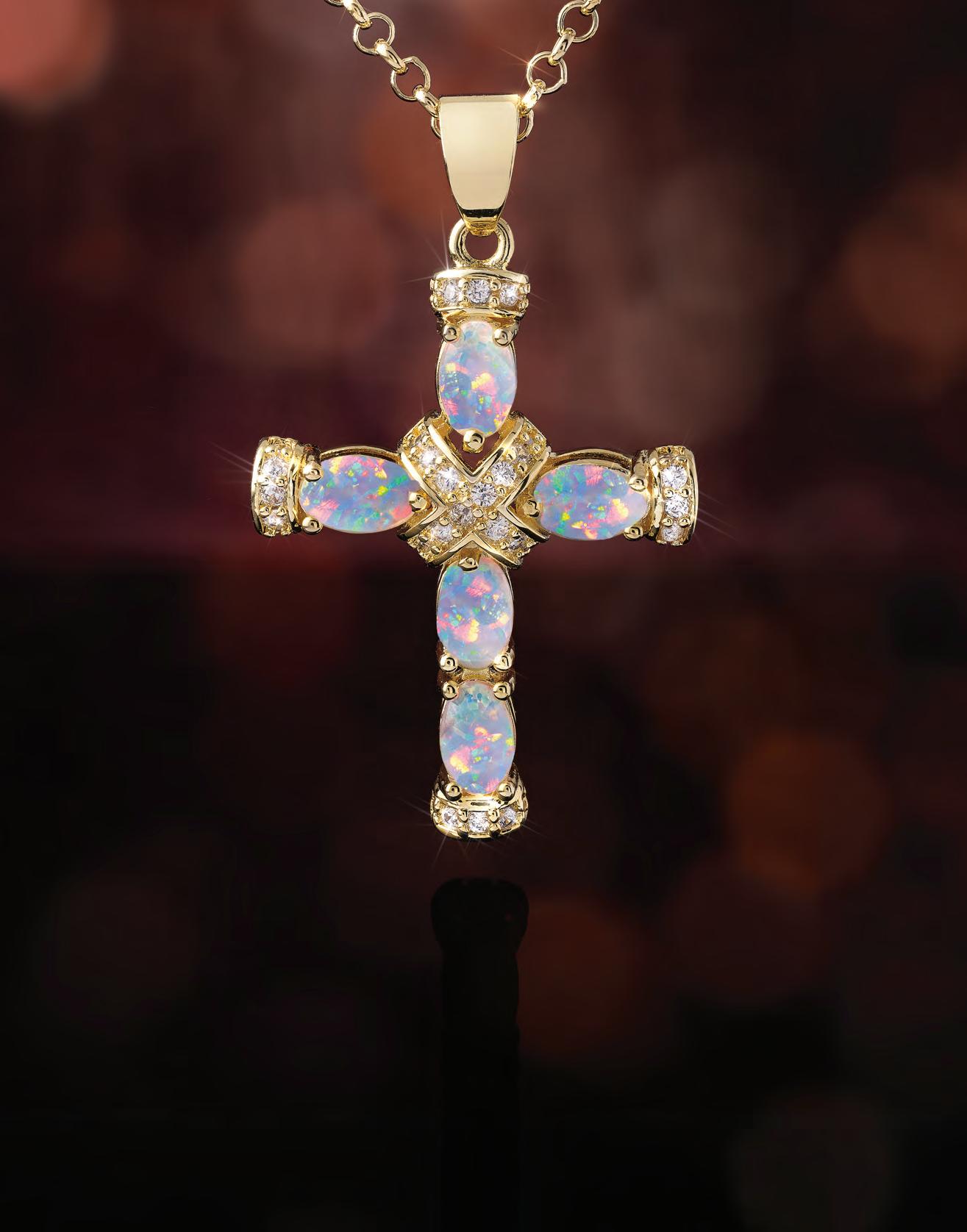
“I never expected it to be so beautiful that it takes your breath away.”
— Kaya C., on Stauer Opals
In a quaint village, nestled between rolling hills, lived a young woman with a deep appreciation for gemstones. Her grandmother gifted her a delicate cross pendant adorned with opals. "e opals shimmered with a mesmerizing play of colors, reflecting hues of blues, greens, and fiery oranges. Her grandmother shared the legend of the opals, believed to bring hope, purity, and luck to those who wore them.
Using this story as inspiration, Stauer brings you the Opal Spirit Cross Pendant. With over 2 total carats of Kyocera lab-created opals set in .925 sterling silver encased in yellow gold, this pendant is a radiant celebration of beauty and craftsmanship. Each opal captivates with a kaleidoscopic dance of fiery oranges blending into oceanic blues, streaked with flashes of vibrant green that seem to come alive with every movement. "e shimmering opals are skillfully arranged to create an enchanting, otherworldly glow, embodying the spirit of hope and harmony.
"is breathtaking combination of color and craftsmanship is available as a limited availability of

only 930 pieces, making it a rare and treasured addition to your jewelry collection. Plus, when you order today, you’ll receive the gold-!nished sterling silver chain—a $69 value—absolutely free!
Don’t miss your chance to own this exclusive tribute to timeless elegance and meaningful symbolism. Necklace Speci!cations:
• 2 ½ ctw. Kyocera lab opals and DiamondAura® accents
• Yellow gold-finished .925 sterling silver setting
18"
silver



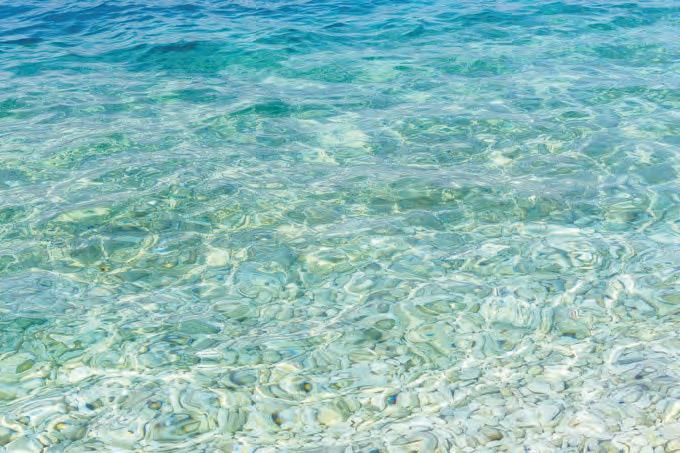




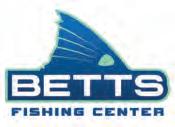
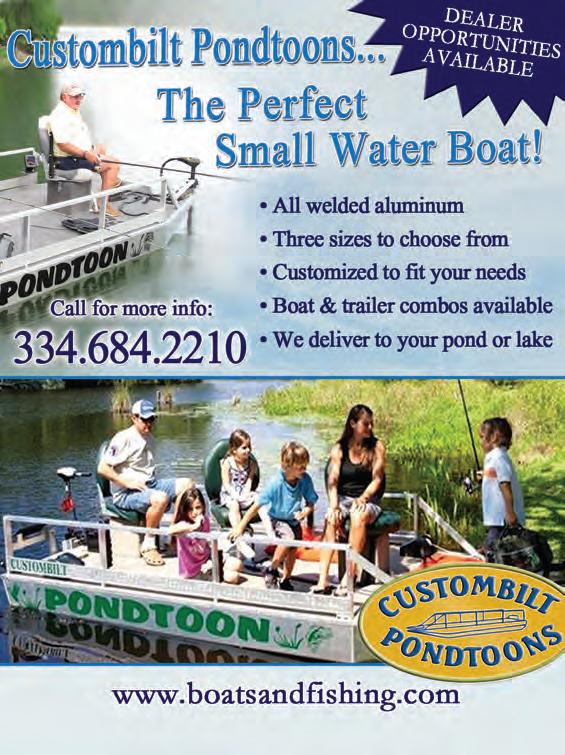

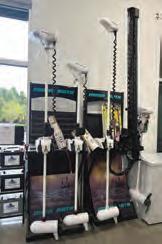

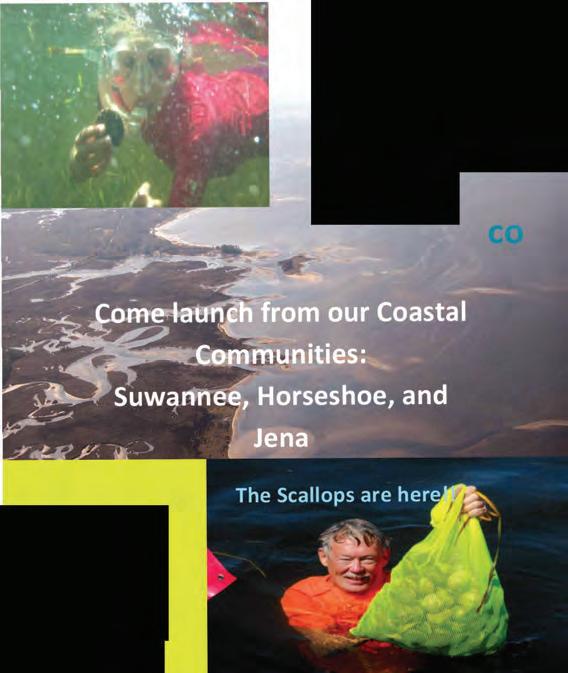



The quest to find the ultimate men’s watch has traditionally been a difficult one in the world of fashion. A timepiece with the perfect look and functionality has long been the goal of both watch designers and enthusiasts alike.
The Renegade Blue Chronograph Men’s Watch is the perfect combination of style and function. With a sleek design that features a bold blue dial, rose gold hands and hour markers, and a durable sports silicone band, this timepiece will instantly elevate any outfit.
The three sub-dials provide a precise timekeeping function. The sports silicone band is durable yet comfortable, providing a secure fit that won’t slide around on your wrist. The band is also easy to clean and maintain, making it perfect for everyday wear. The watch’s 30 Metre Water Resistance rating ensures that it has you covered whatever the occasion.
The Renegade Blue is also built to last, with a sturdy stainless steel caseback and exquisitely detailed bezel. The watch is powered by a super reliable quartz movement, which is covered by our incredible 5 Year Movement Warranty - ensuring accurate timekeeping for many years to come!

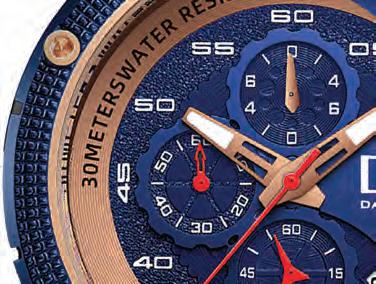

At the amazingly low price of just $99 plus S&H, this watch is an absolute steal. Don’t miss out on the chance to own the Renegade Blue and Rose Gold Chronograph Men’s Watch - order yours today!




